Barcelona…Park Guell was our first stop with its view over the city. (Sorry for the absence of accent marks and umlauts here, but I couldn’t find accent keys in the blog editing.)
This park was designed in the late 1800’s by Antonio Gaudi as a posh residential suburb, but the development of high end homes never took off because it was too far from the conveniences of downtown life for most who could afford to build homes in Barcelona. While there are only a few houses here, the park remains as a great example of Gaudi’s style…flowing lines, non linear, mimicking Mother Nature’s forms as much as possible.

”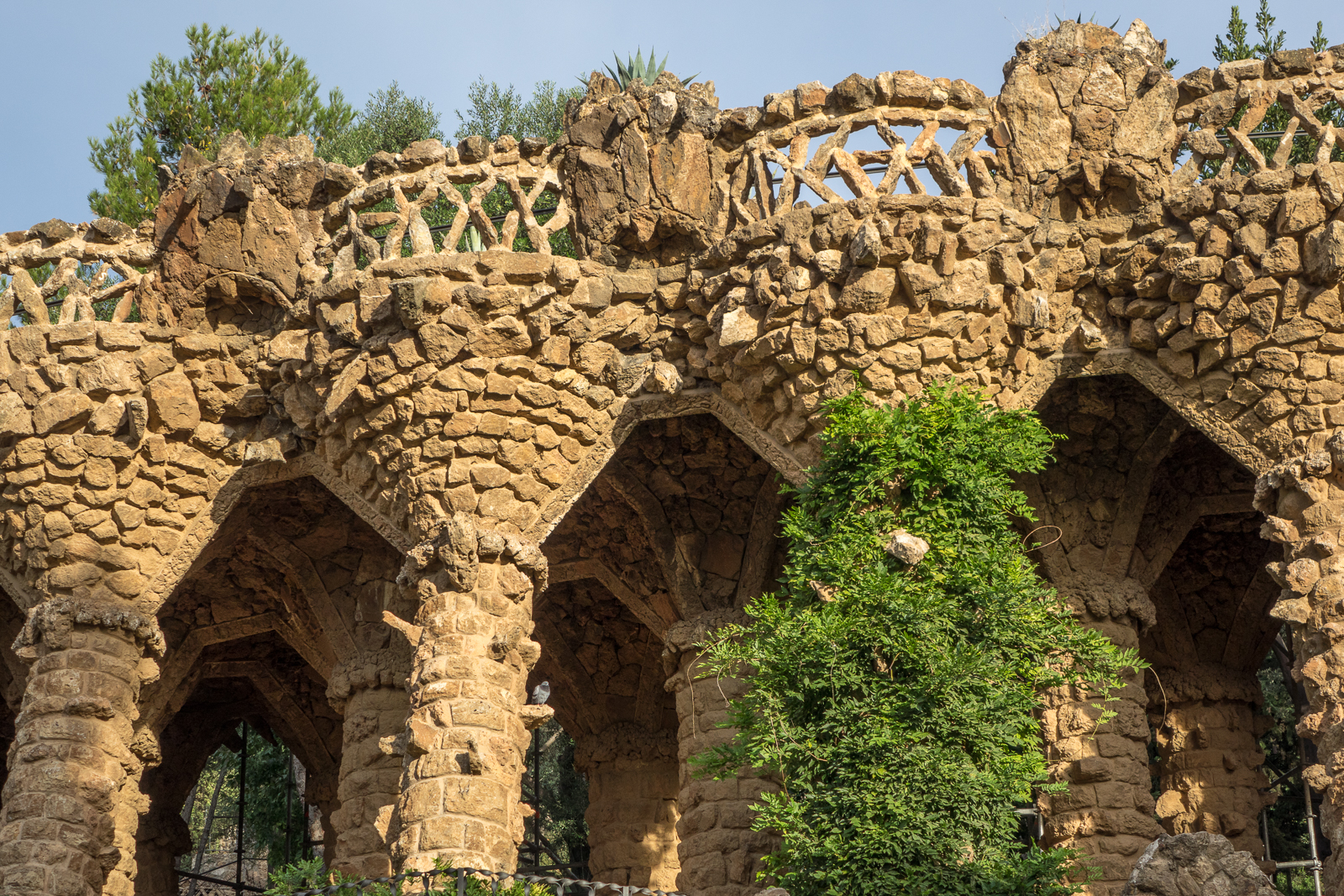
Perched above pillars in the park is a sinuous, curving bench along the whole perimeter. The bench is decorated in a manner that preceded our trend to recycle…glass and ceramic pieces fit into every curvy to form flowing designs. Tourists can also snap pictures of the skyline of Barcelona.

”
”
”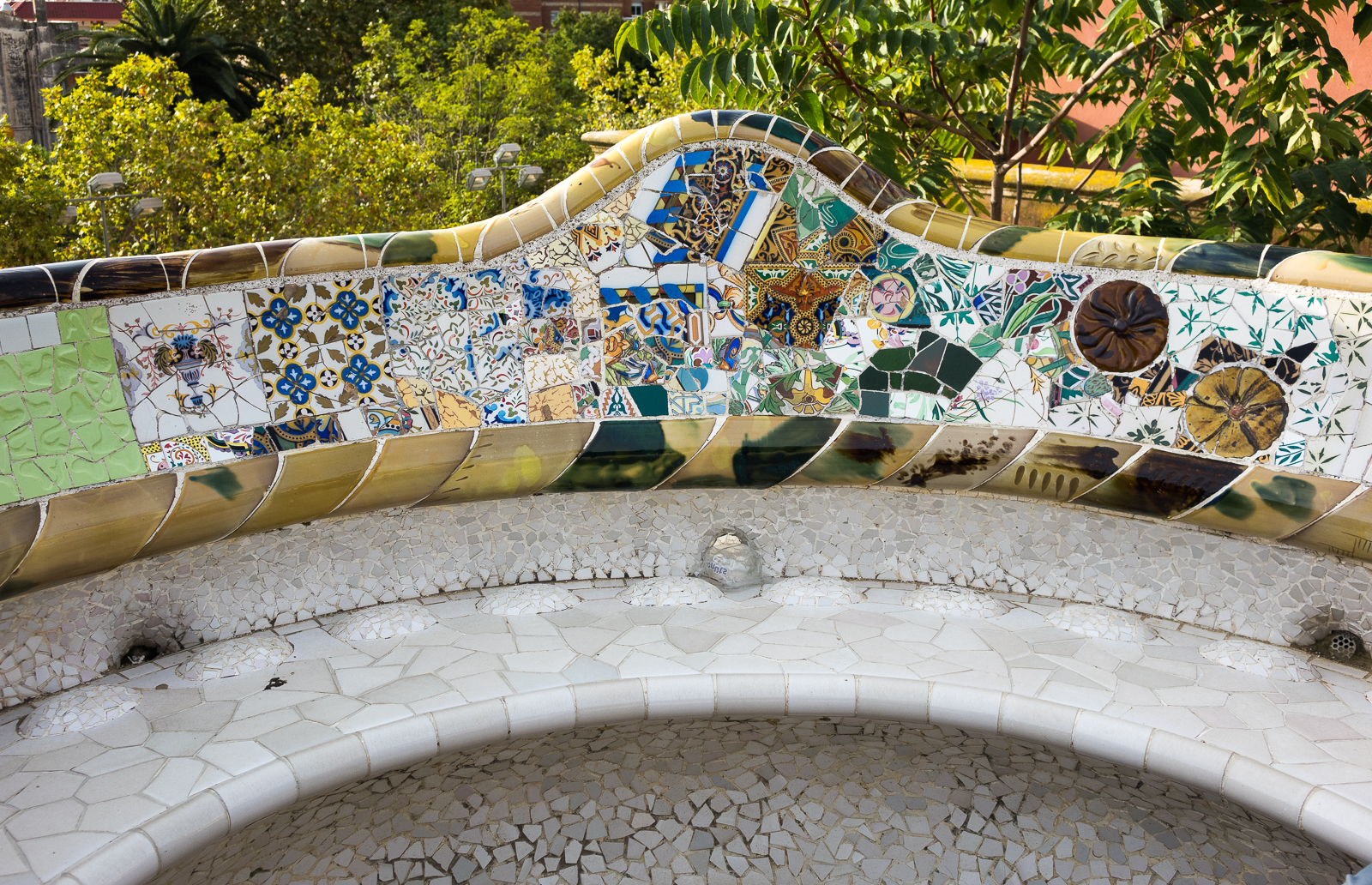
”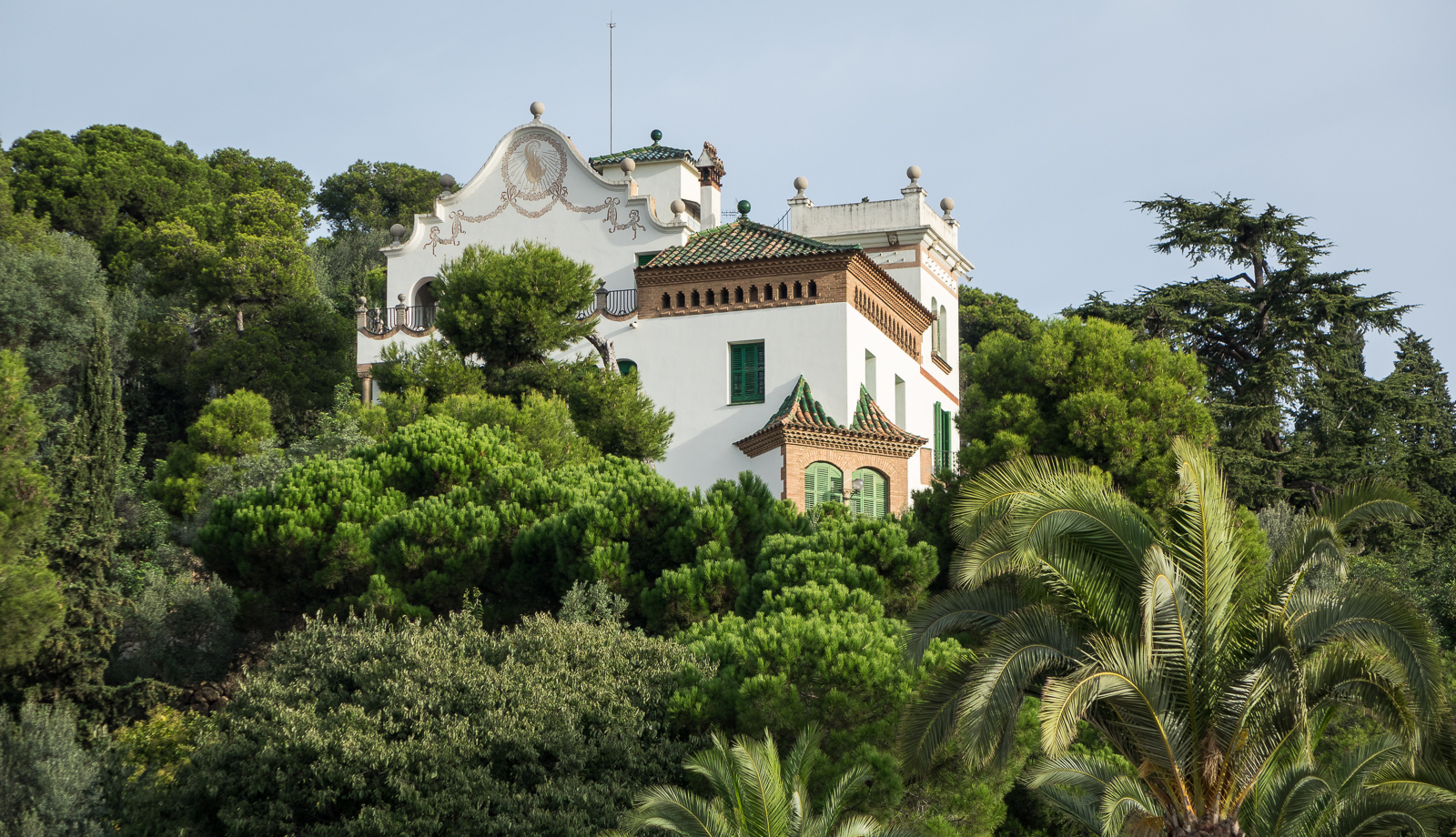
”
”

The ceiling supported by the columns below the benches is similarly decorated with ceramic and glass pieces to reflect the plants and animals of the seacoast.
”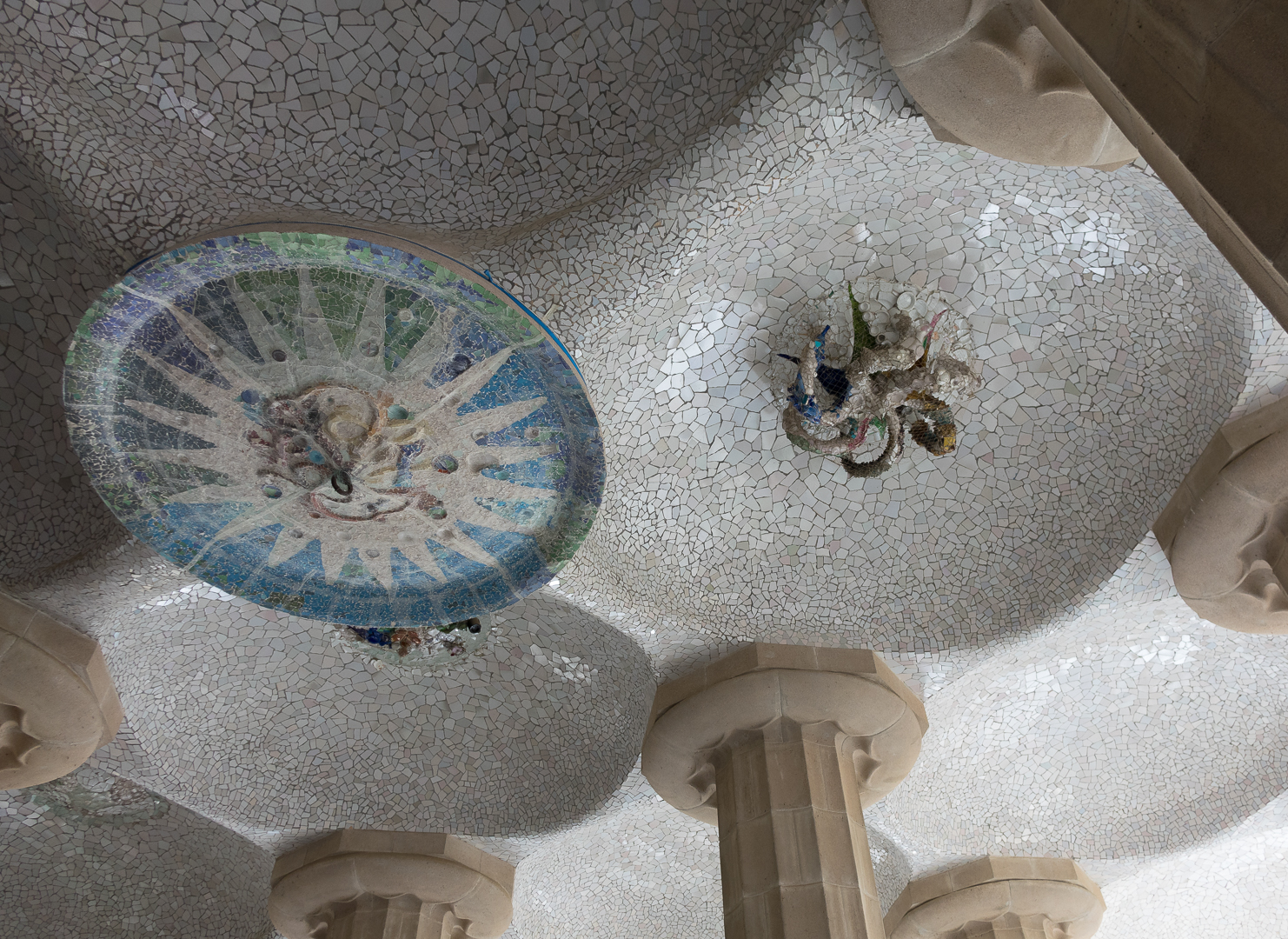
”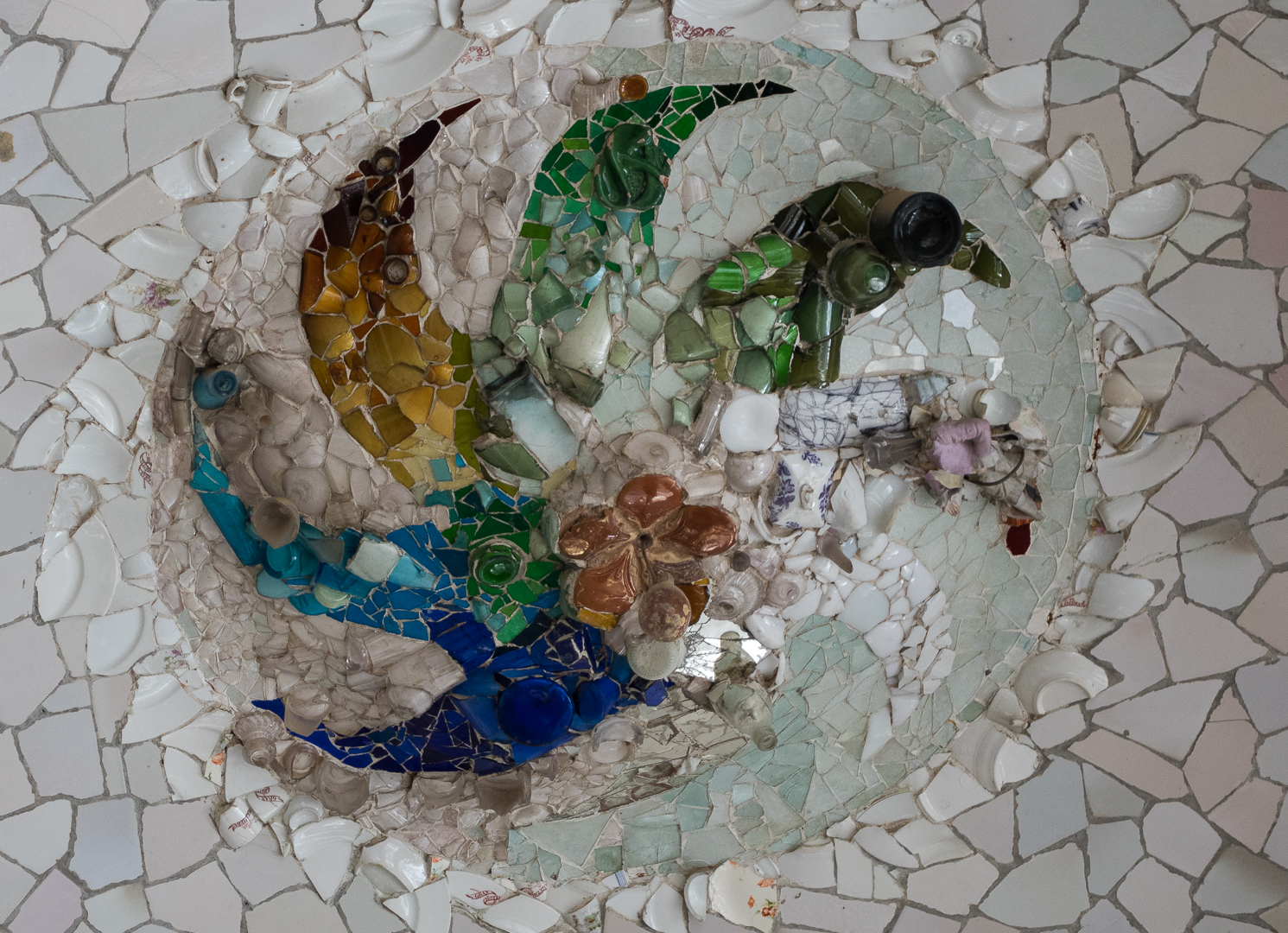
”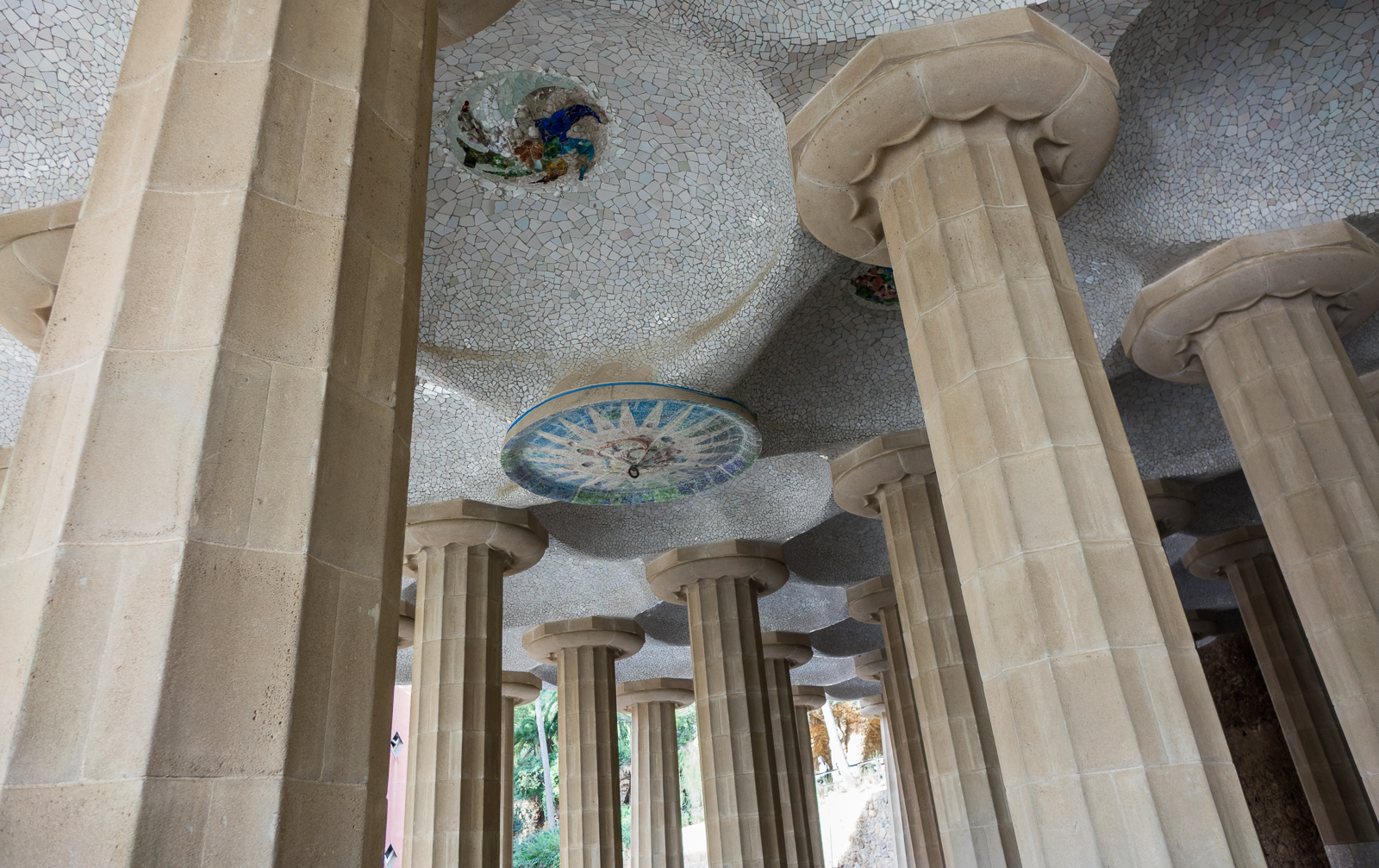
”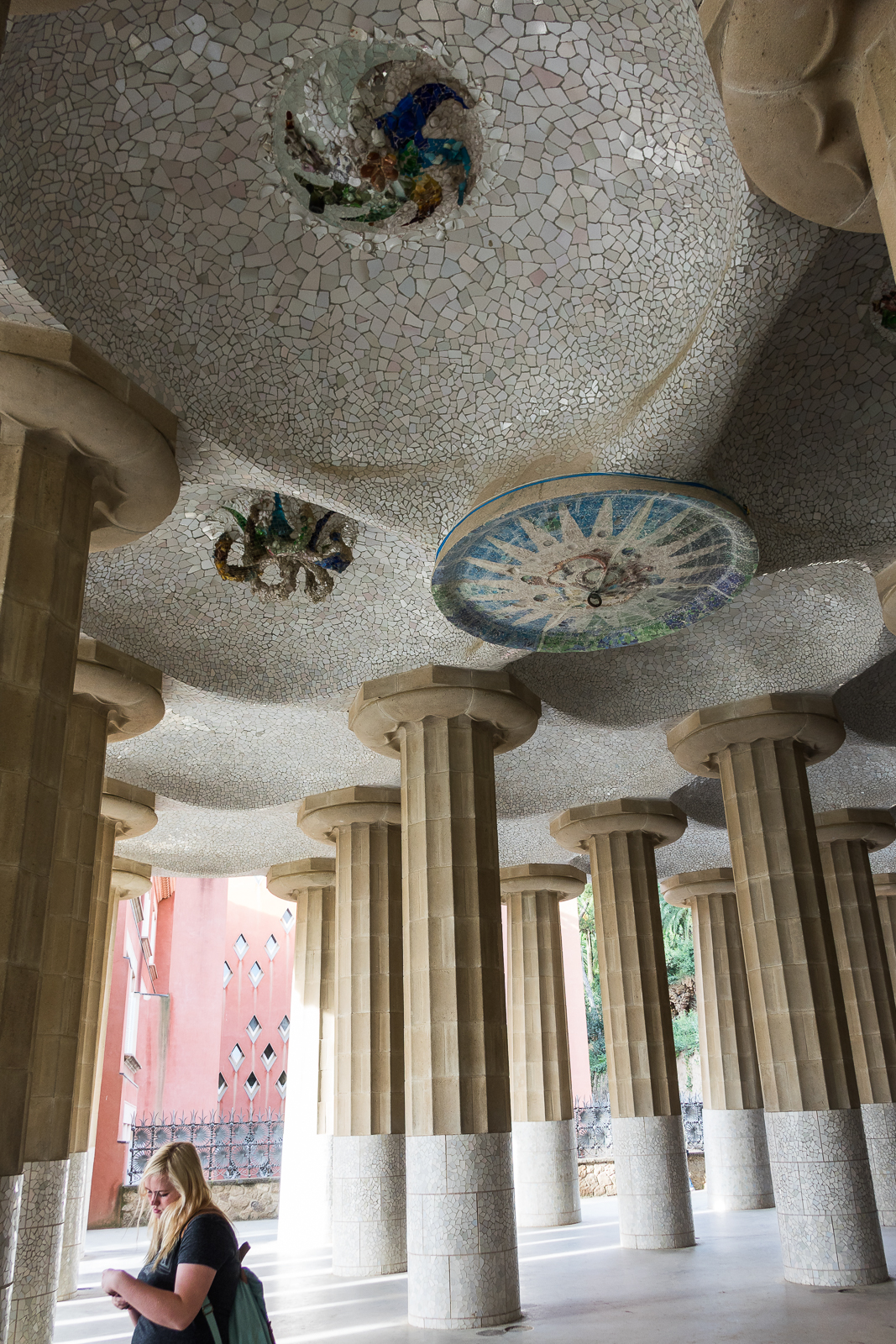
”
”

As you descend the stairs from the benches, you see more Gaudi designs….
”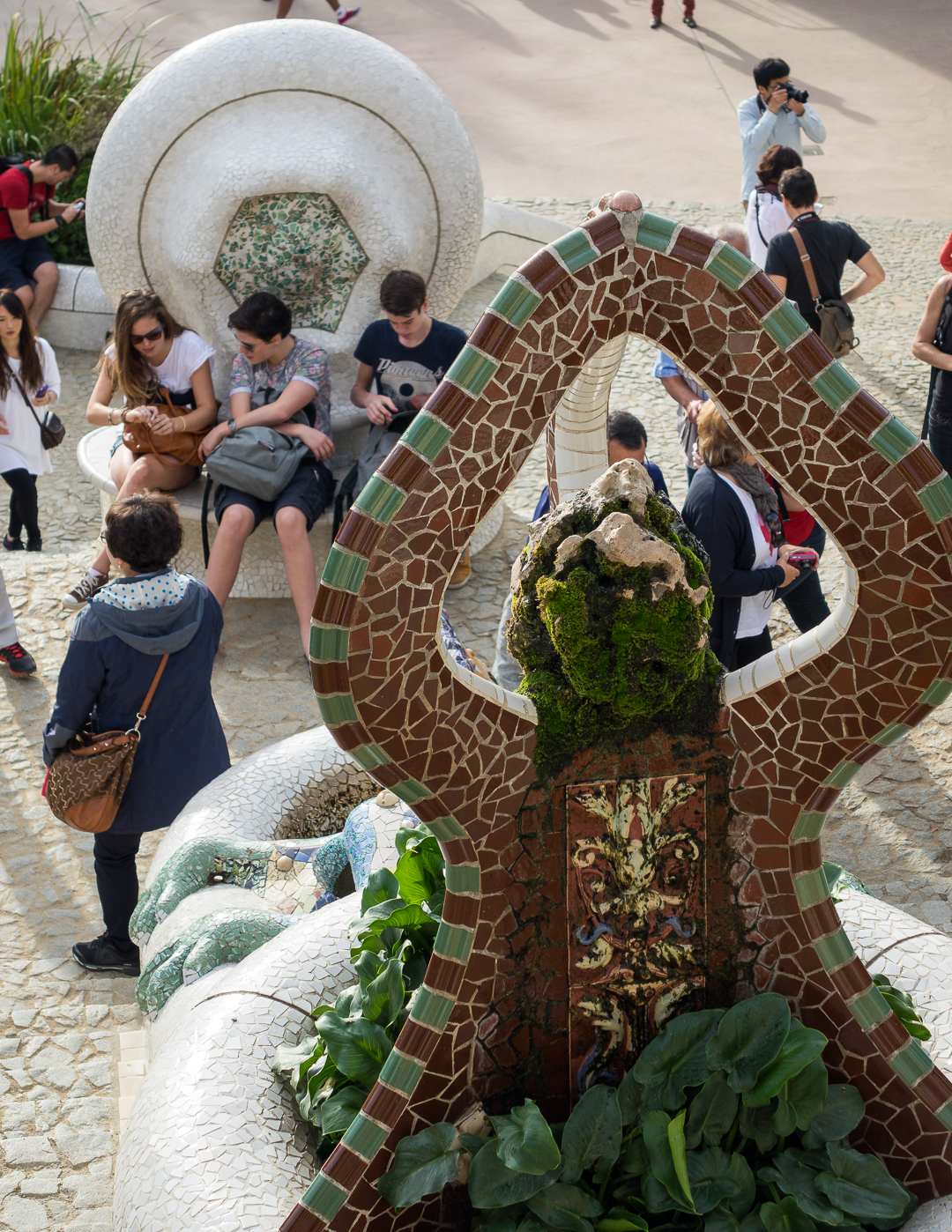
…and his popular lizard statue at the base of the stairs. More whimsical than our desert lizards!
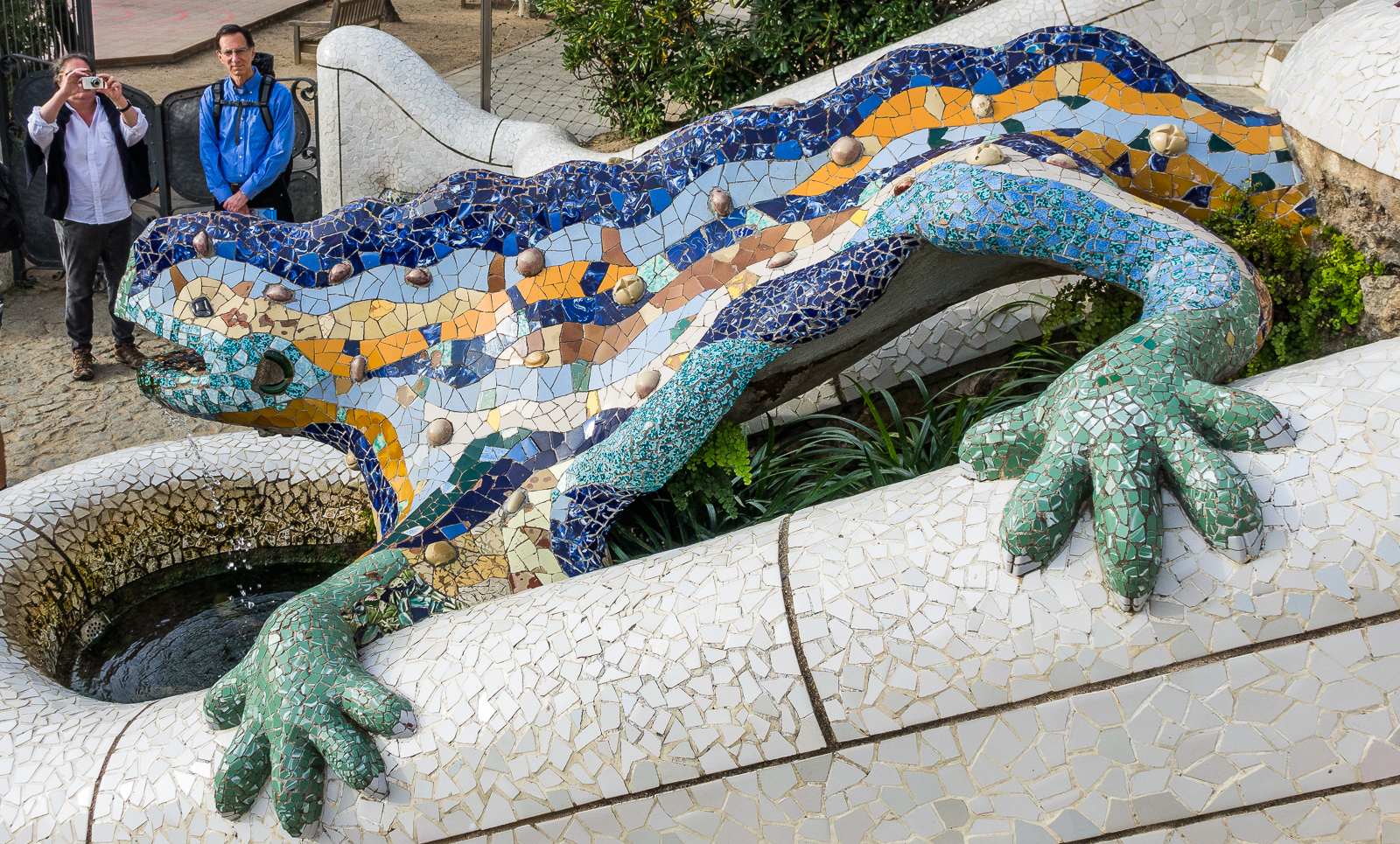
View of the stairs, columns and upper bench from below in Park Guell.
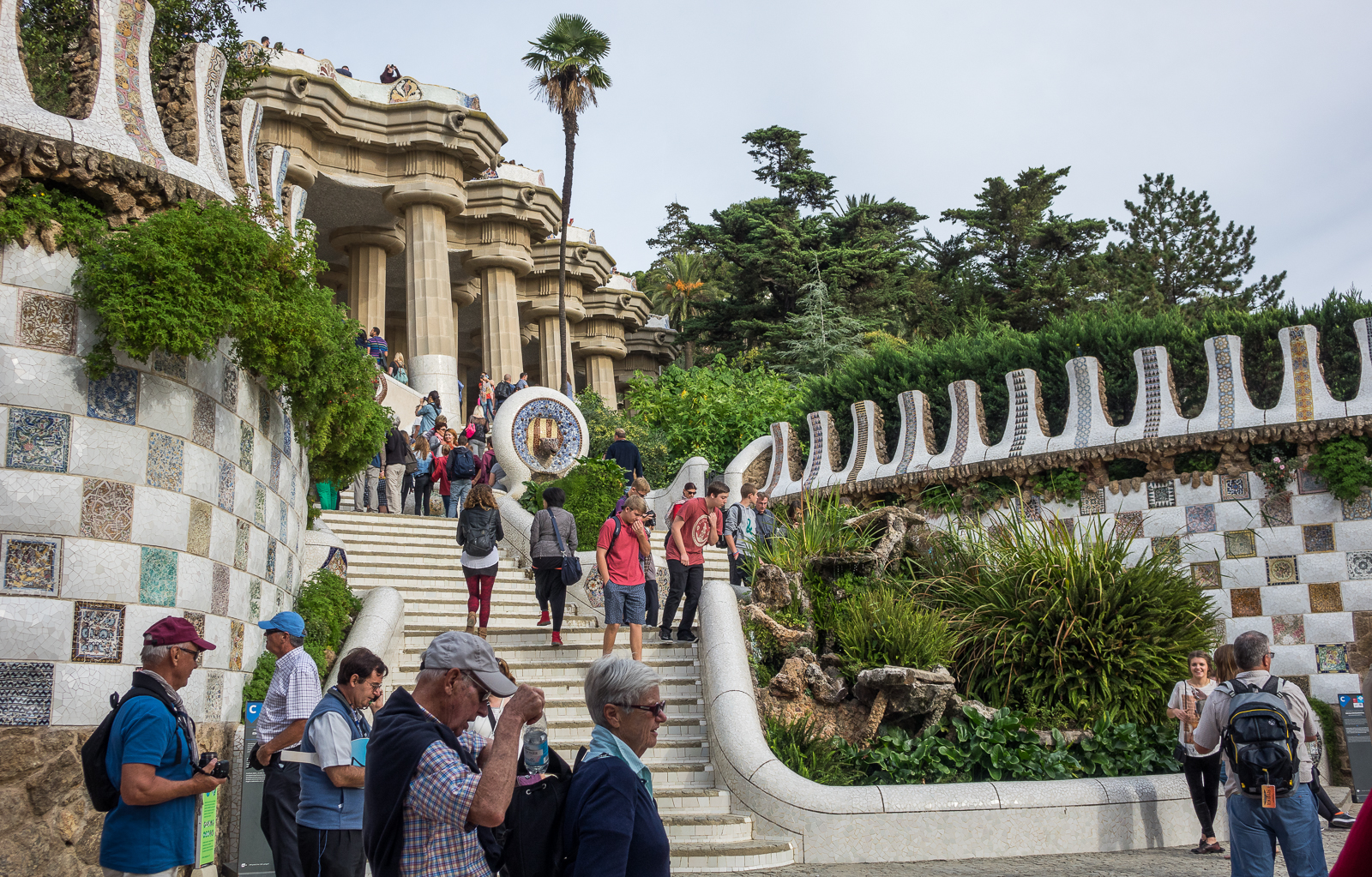
Alejandra, Catalina, Griffin, Jaimie (our English instructor), Miranda, and Kyle enjoy the party atmosphere.
”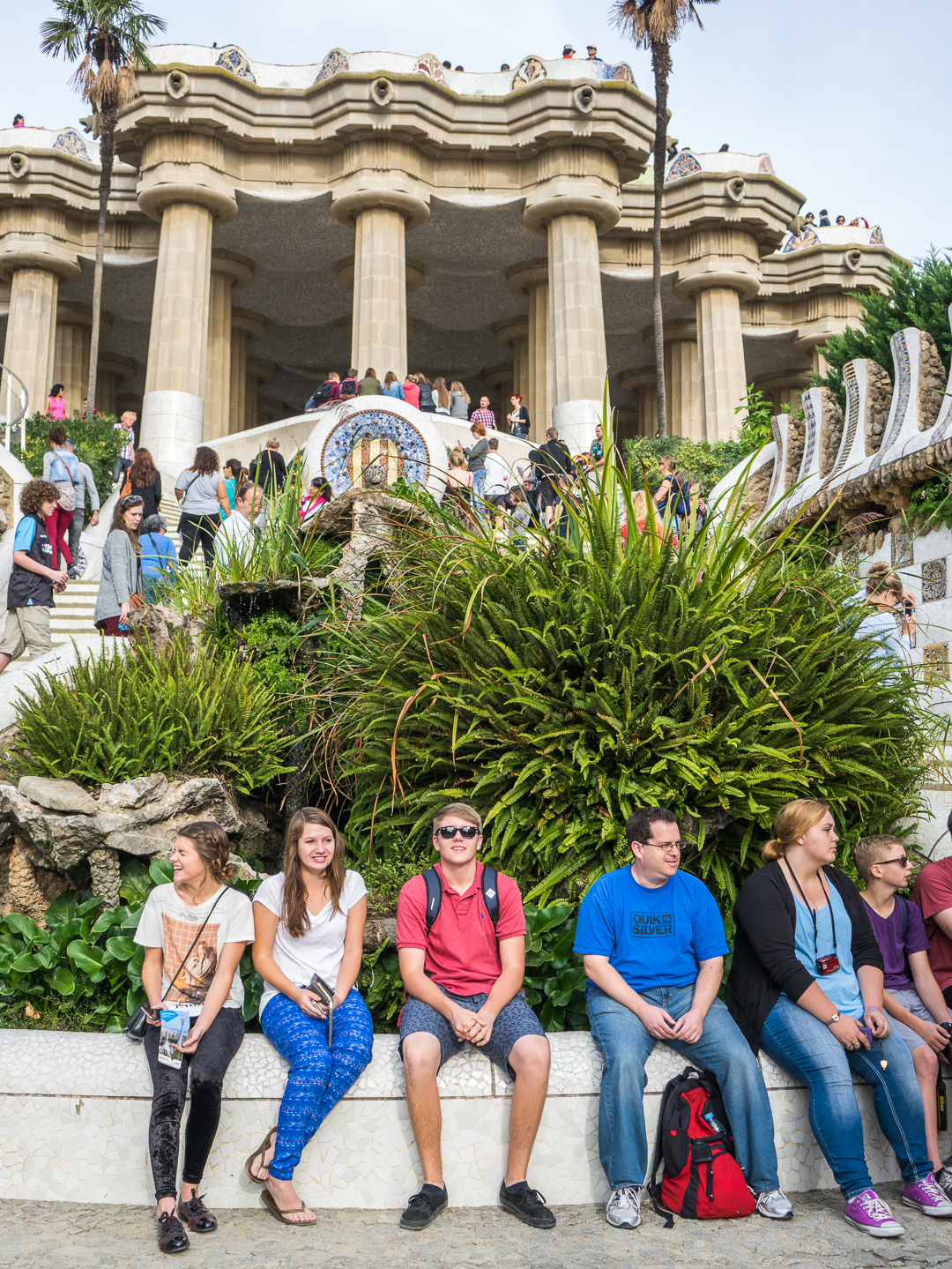
”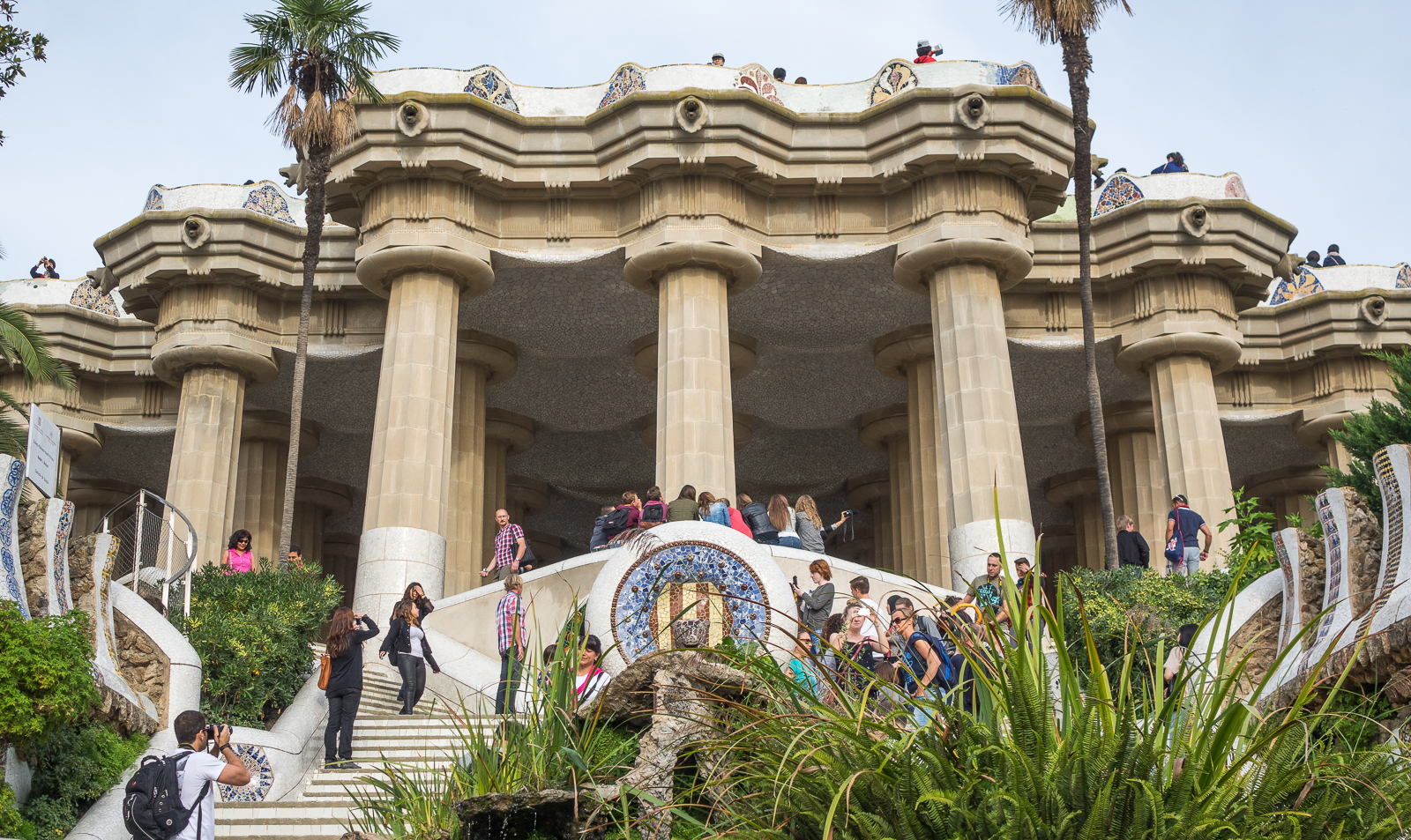
This is a view of Barcelona, featuring La Sagrada Familia (and the forever present cranes) from the viewpoint of Montjuic, a hillside park near the Olympic venues.

Marie, Charlotte, Jaime resting in Montjuic and enjoying a musician in the park.
”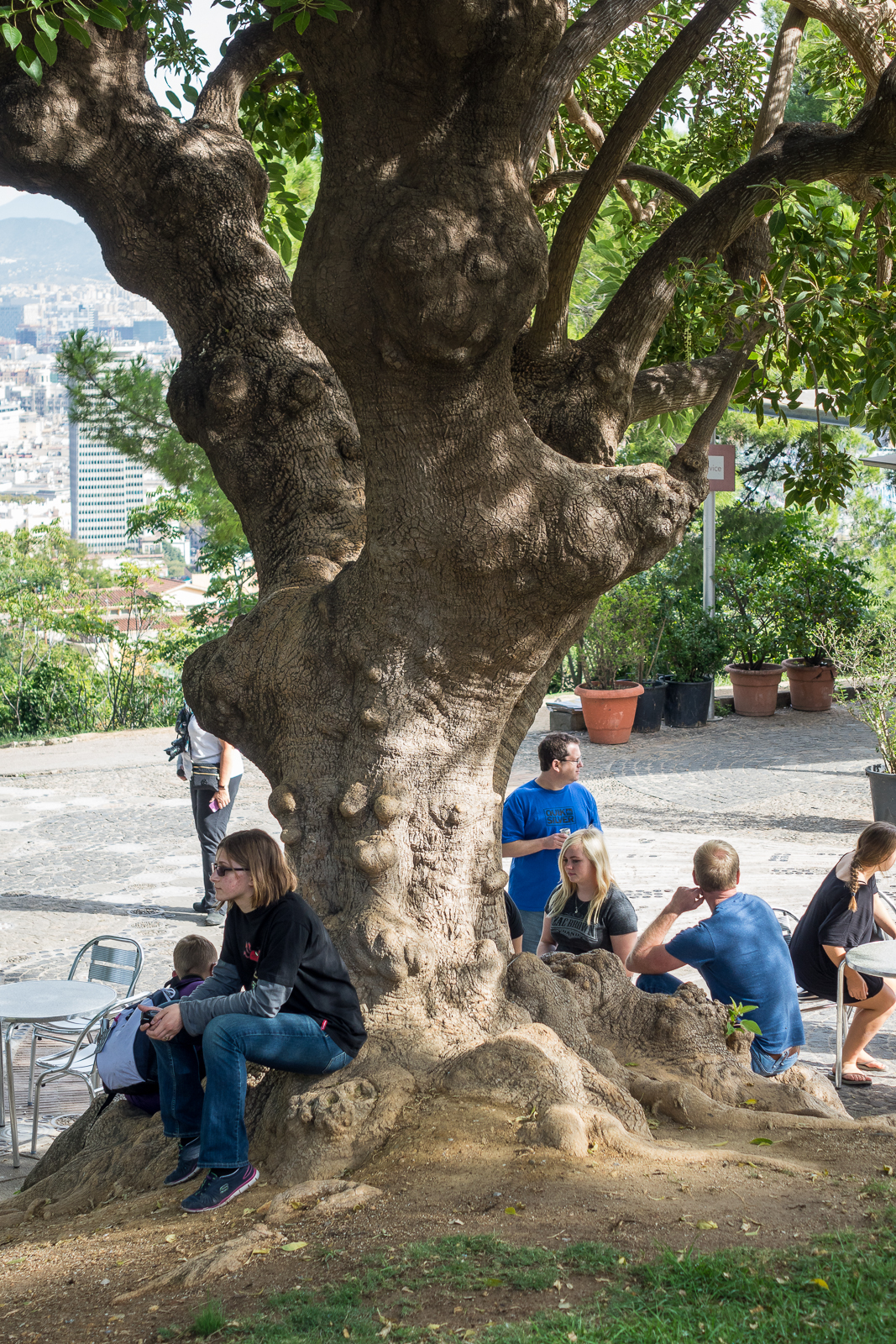
Photo stop at Montjuic.
”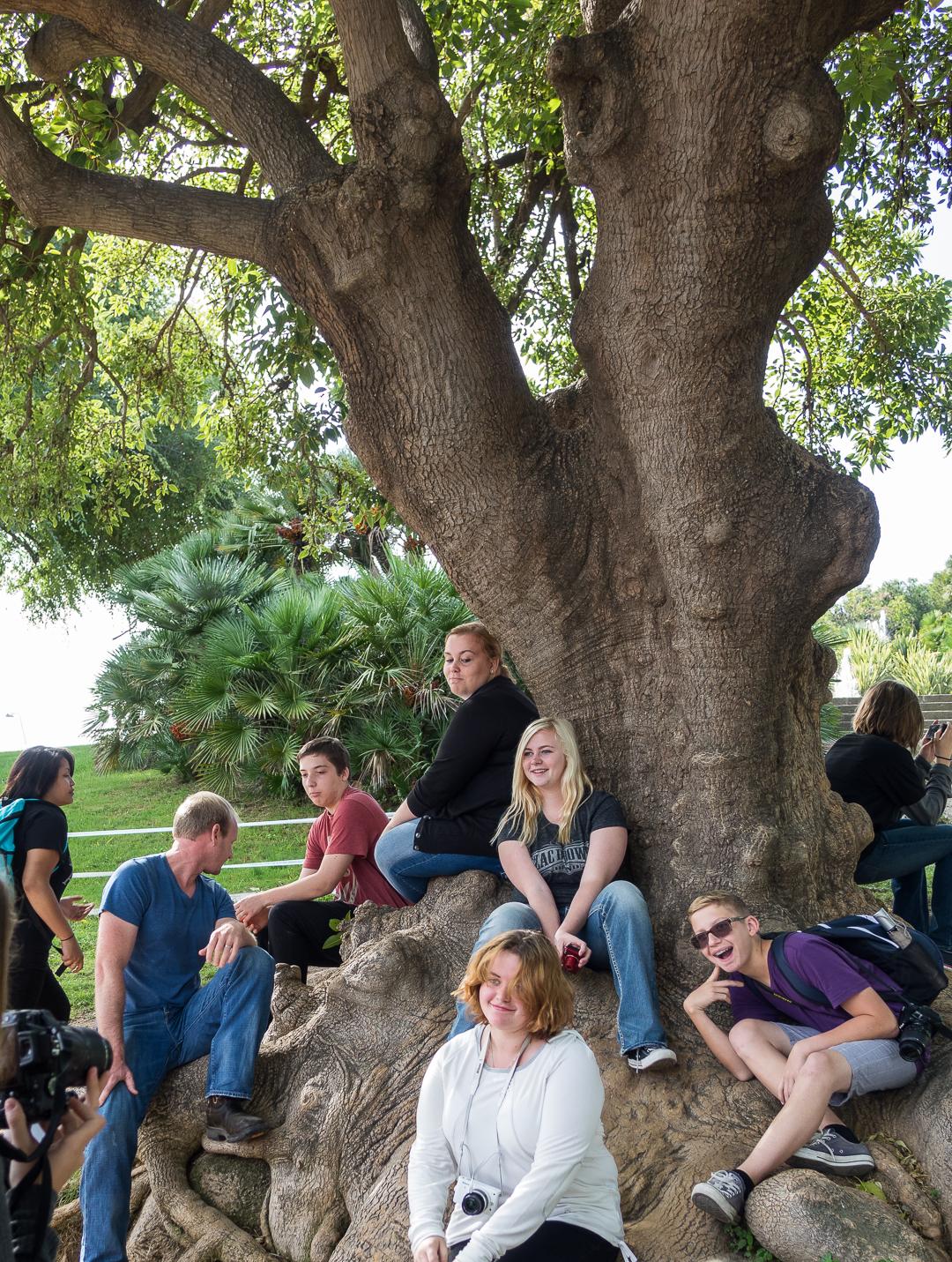
Barcelona is split into various neighborhoods according to when they were built/added on to the town proper. This is a popular spot in the Gothic Quarter. The “Bridge of Sighs”, although very pretty, was not built until the 1920’s to connect a few town official buildings for a world exhibition in 1929. The buildings it connects ARE Gothic, however!
”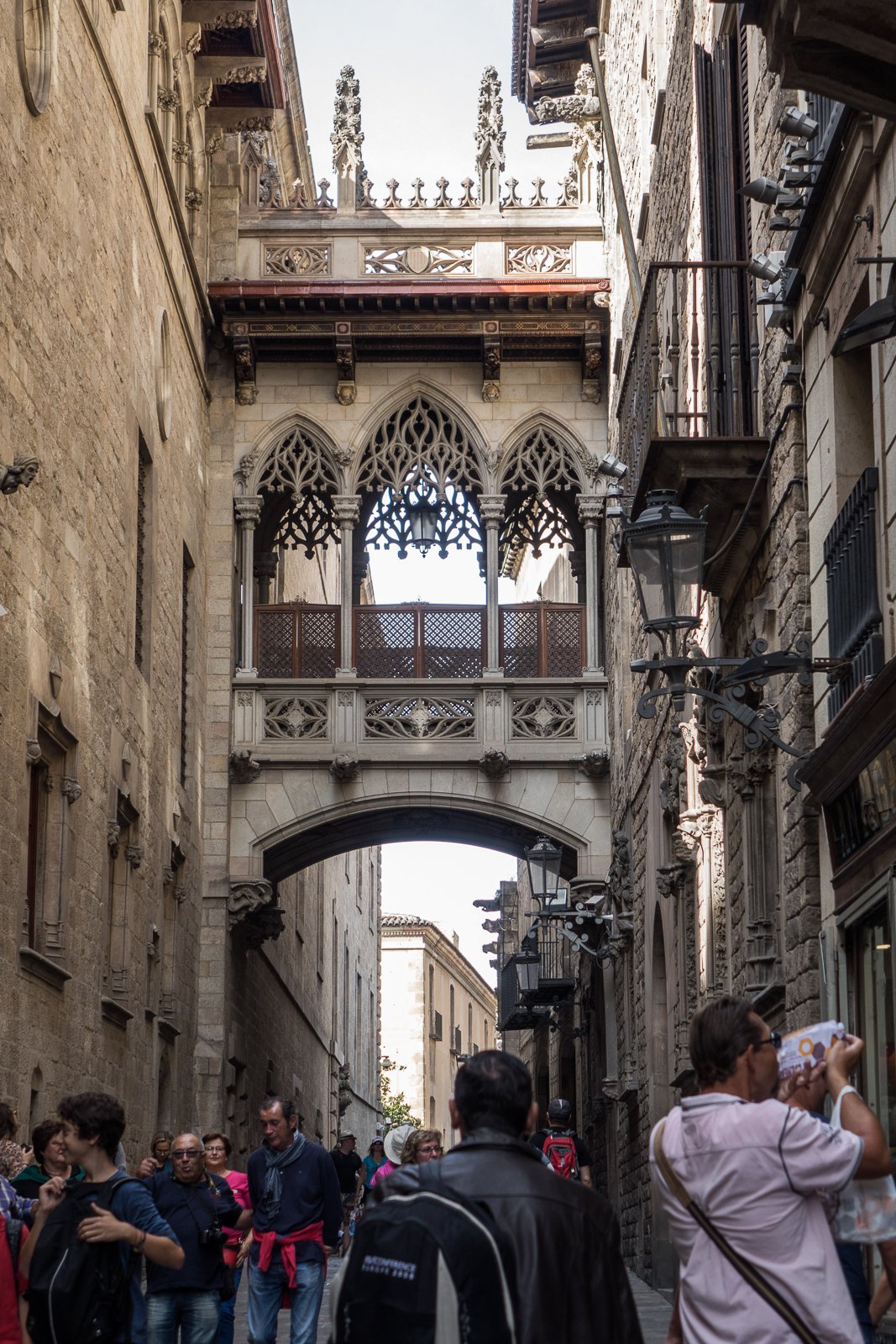
”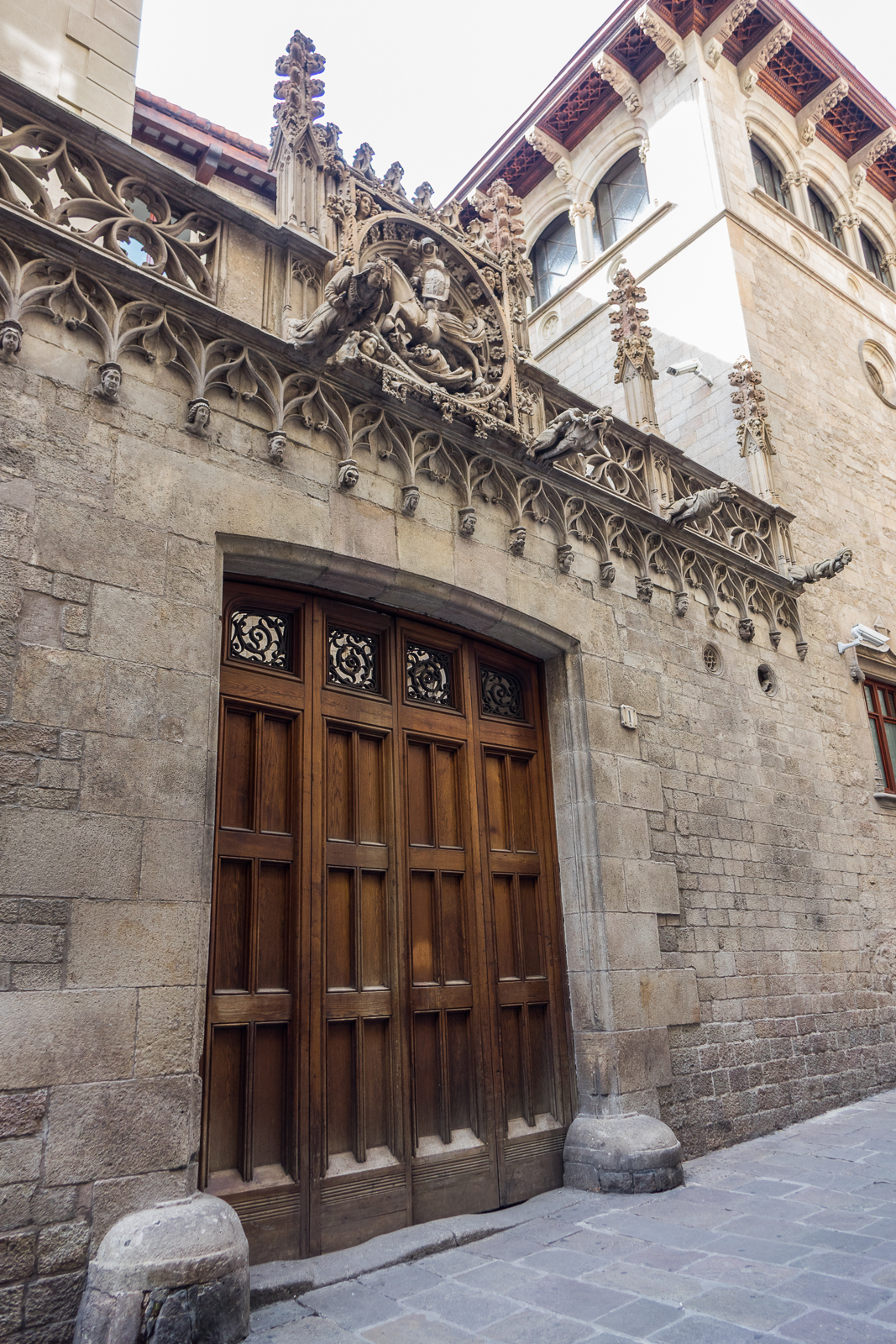
This is the cathedral of Barcelona (NOT the basilica of Sagrada Familia) in the Gothic Quarter. It is dedicated to the city’s patron saint, Eulalia. Rather smaller compared to some of the other Gothic churches we saw, but still charming.
”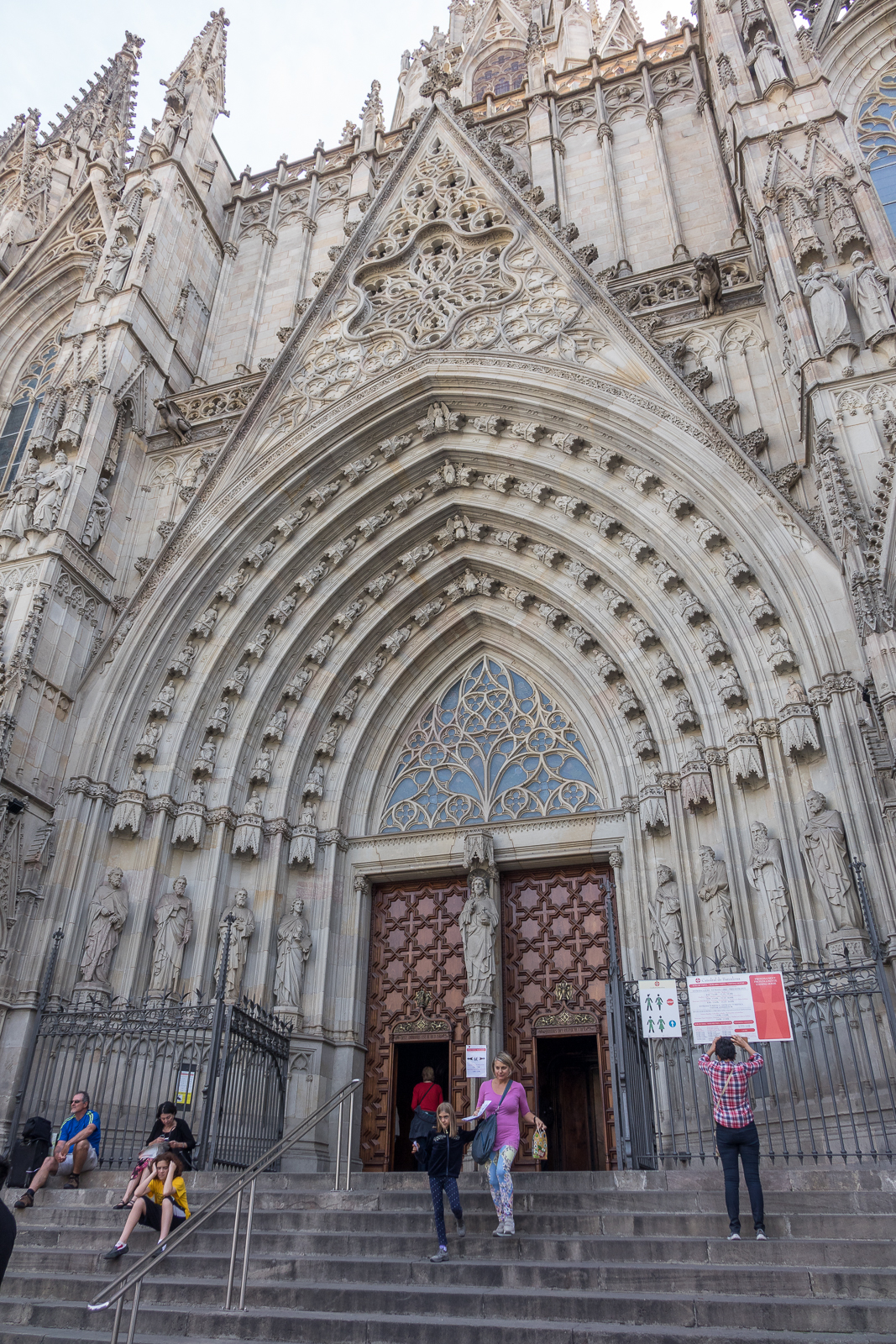
Interior of cathedral–choir stall.
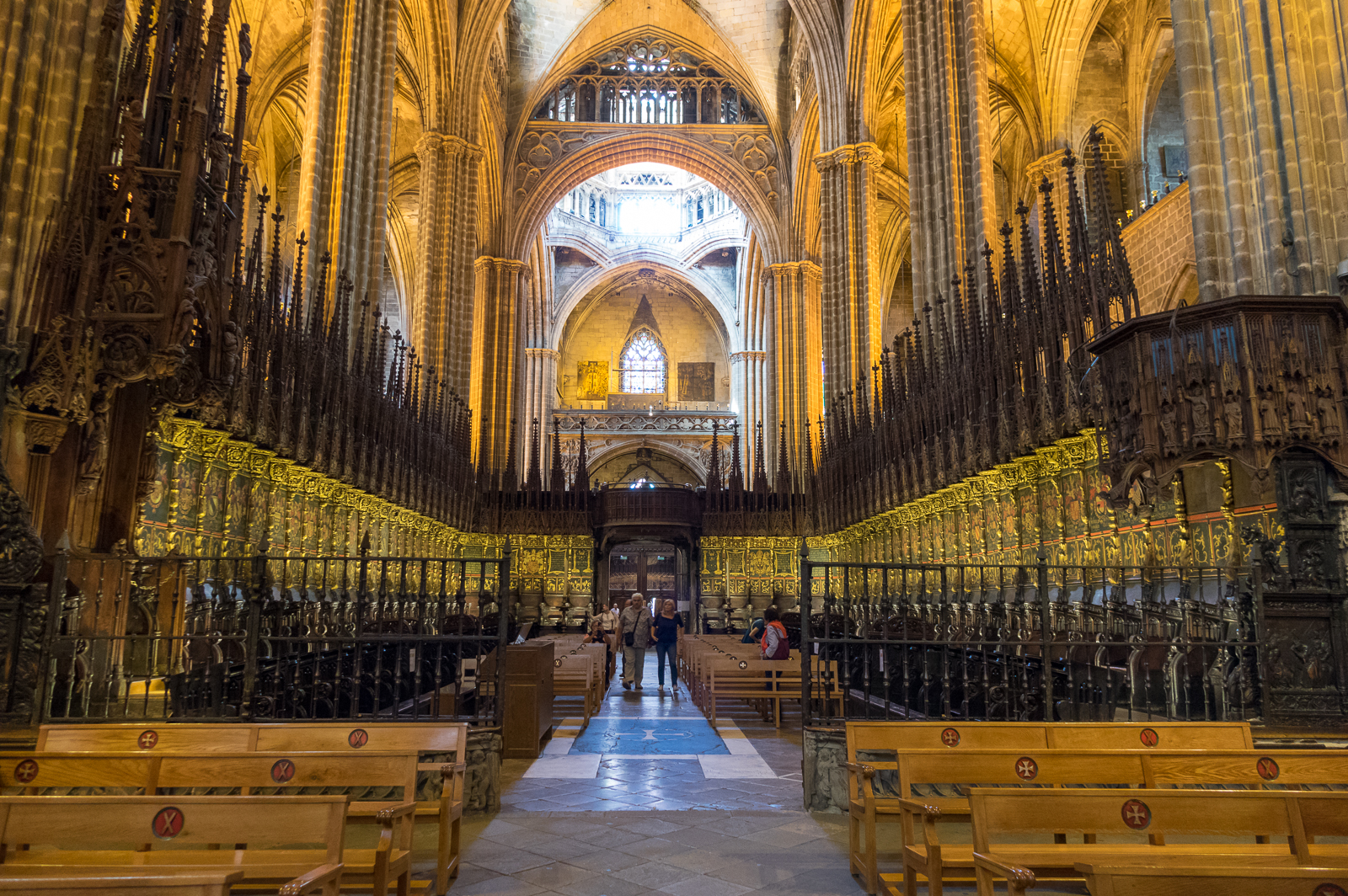
Crypt of St. Eulalia.
”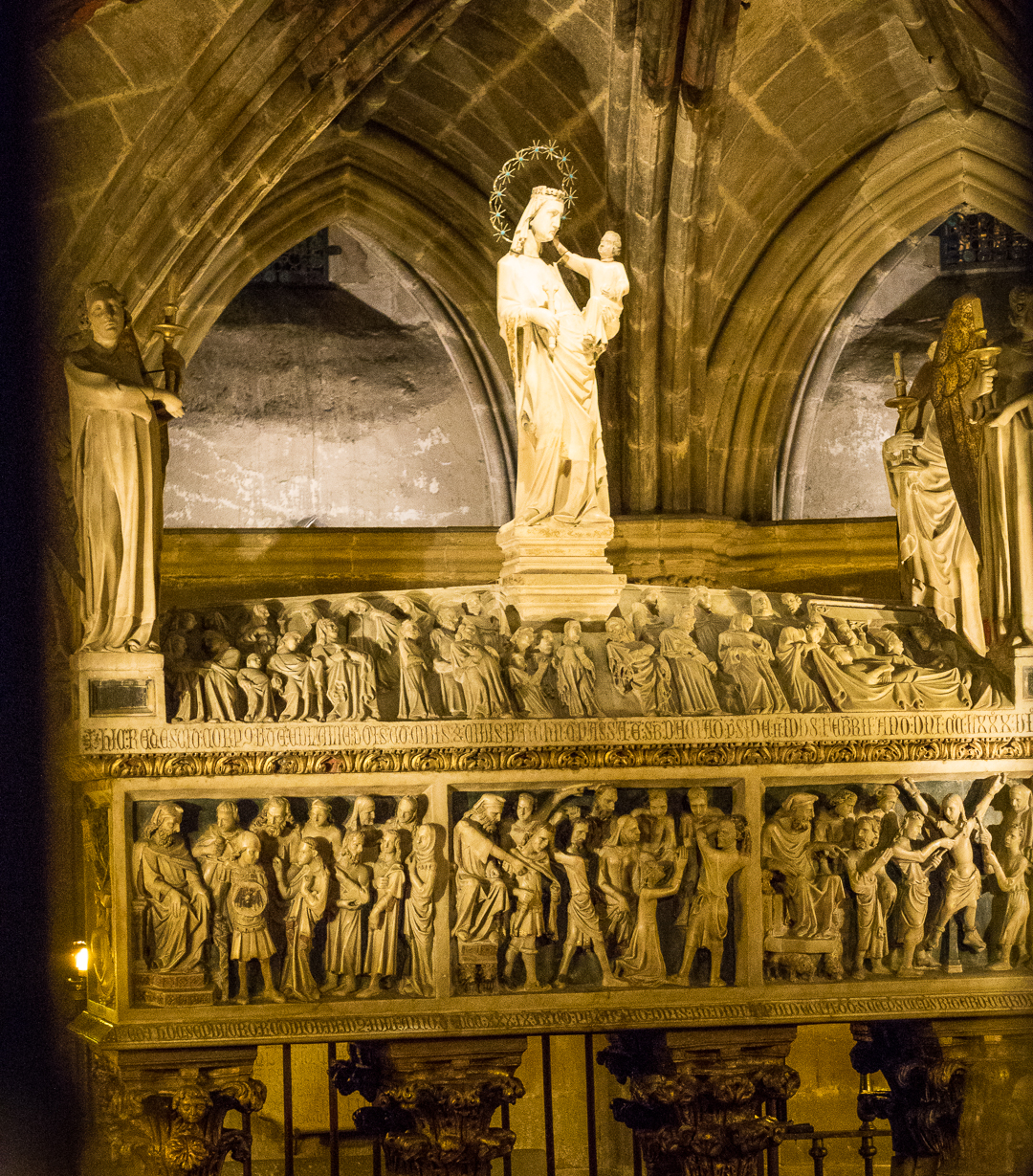
‘
Space above the main altar of the cathedral.
‘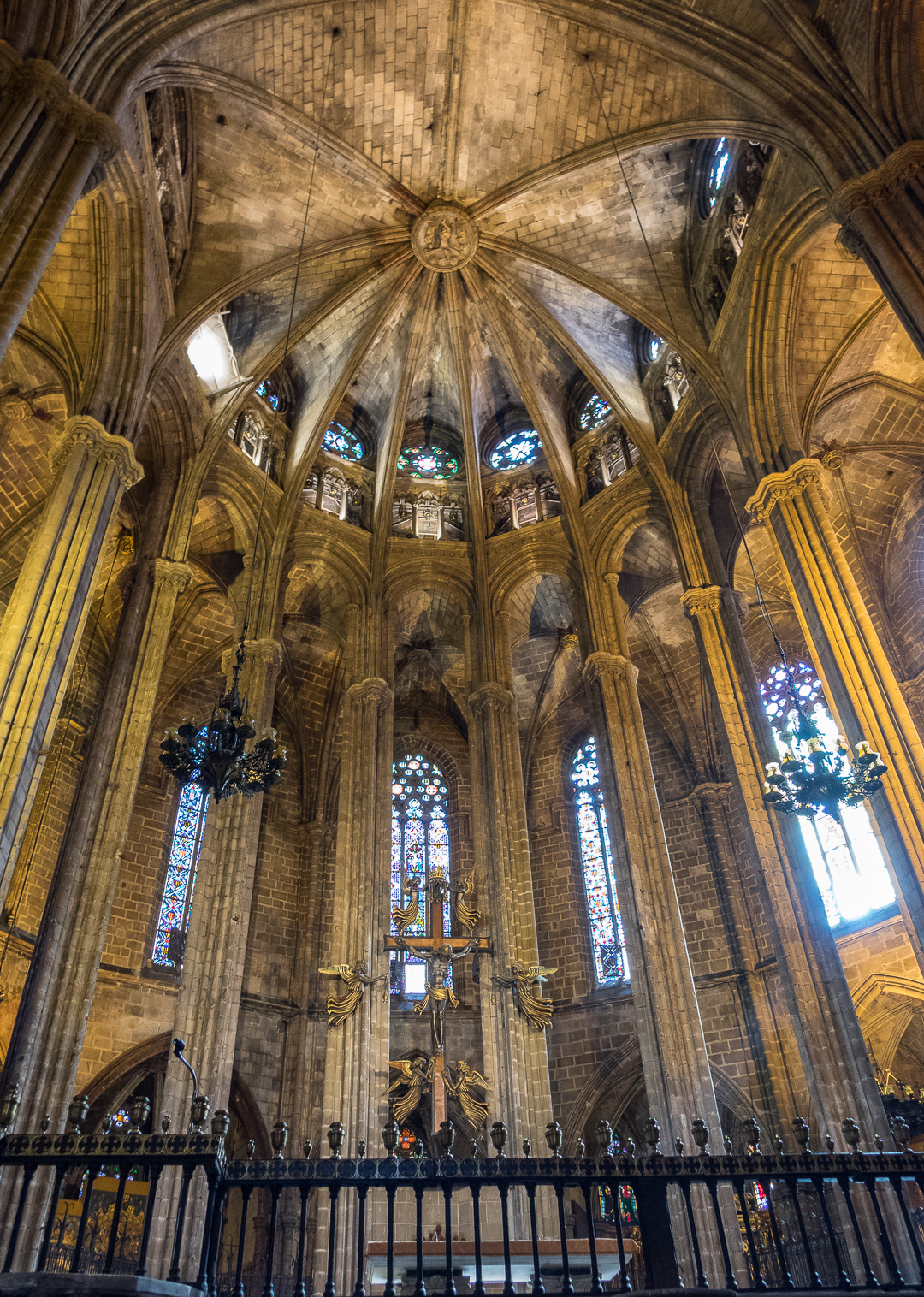
Marie enjoyed taking the (very small) elevator to the roof area for a better view of the spires. The anti-war t-shirt is one she bought in Pamplona.
”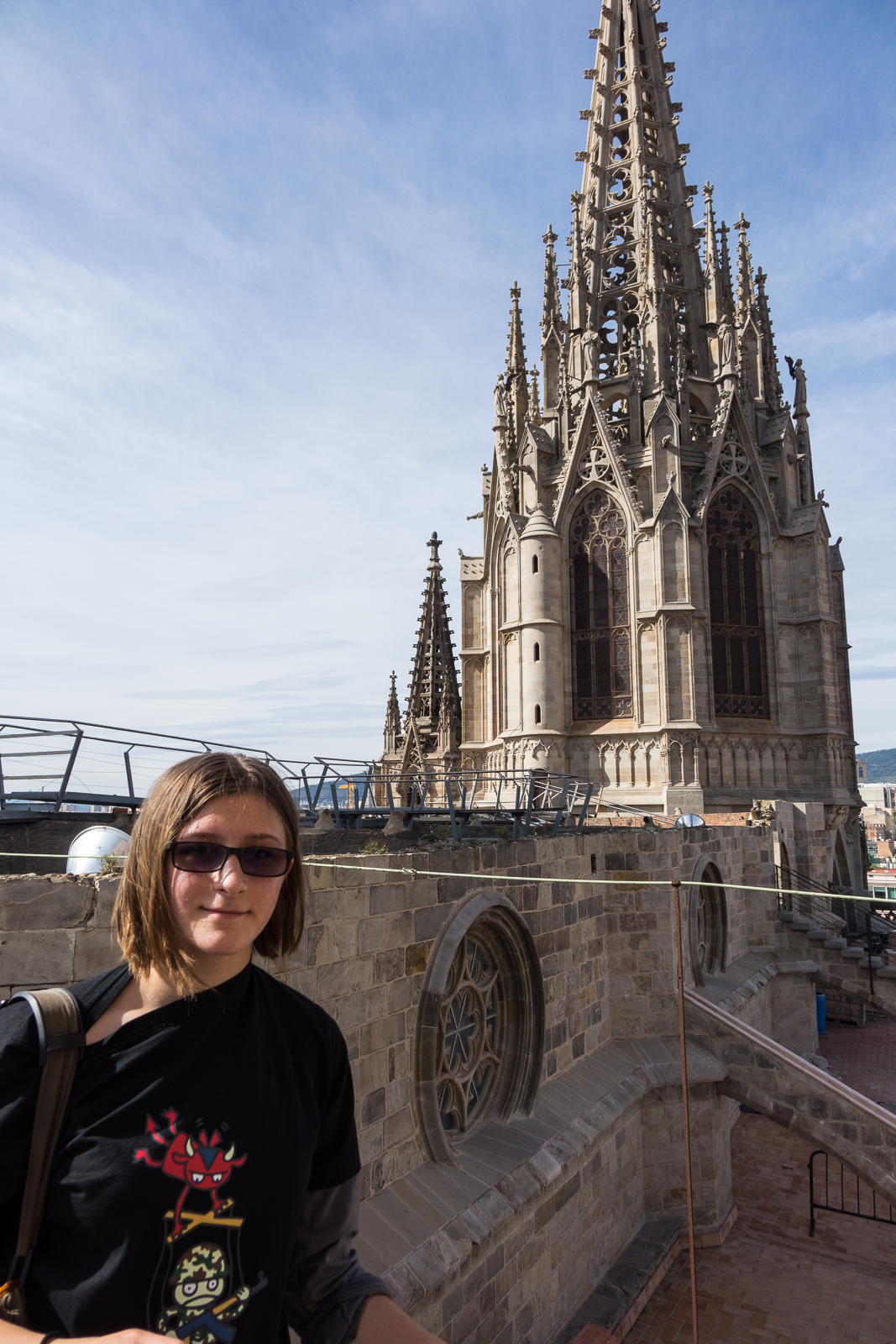
”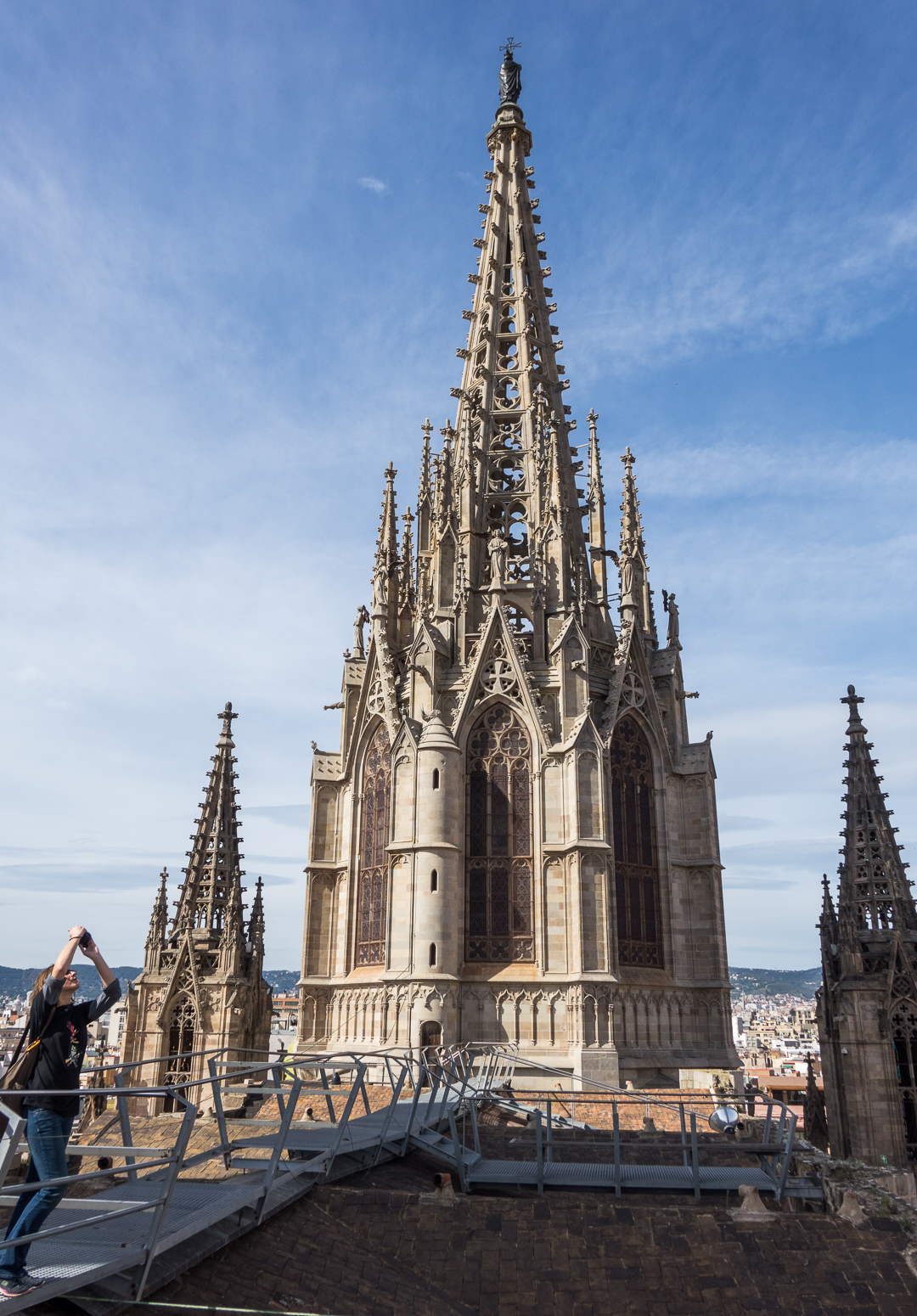
Interior cloisters in the cathedral.
”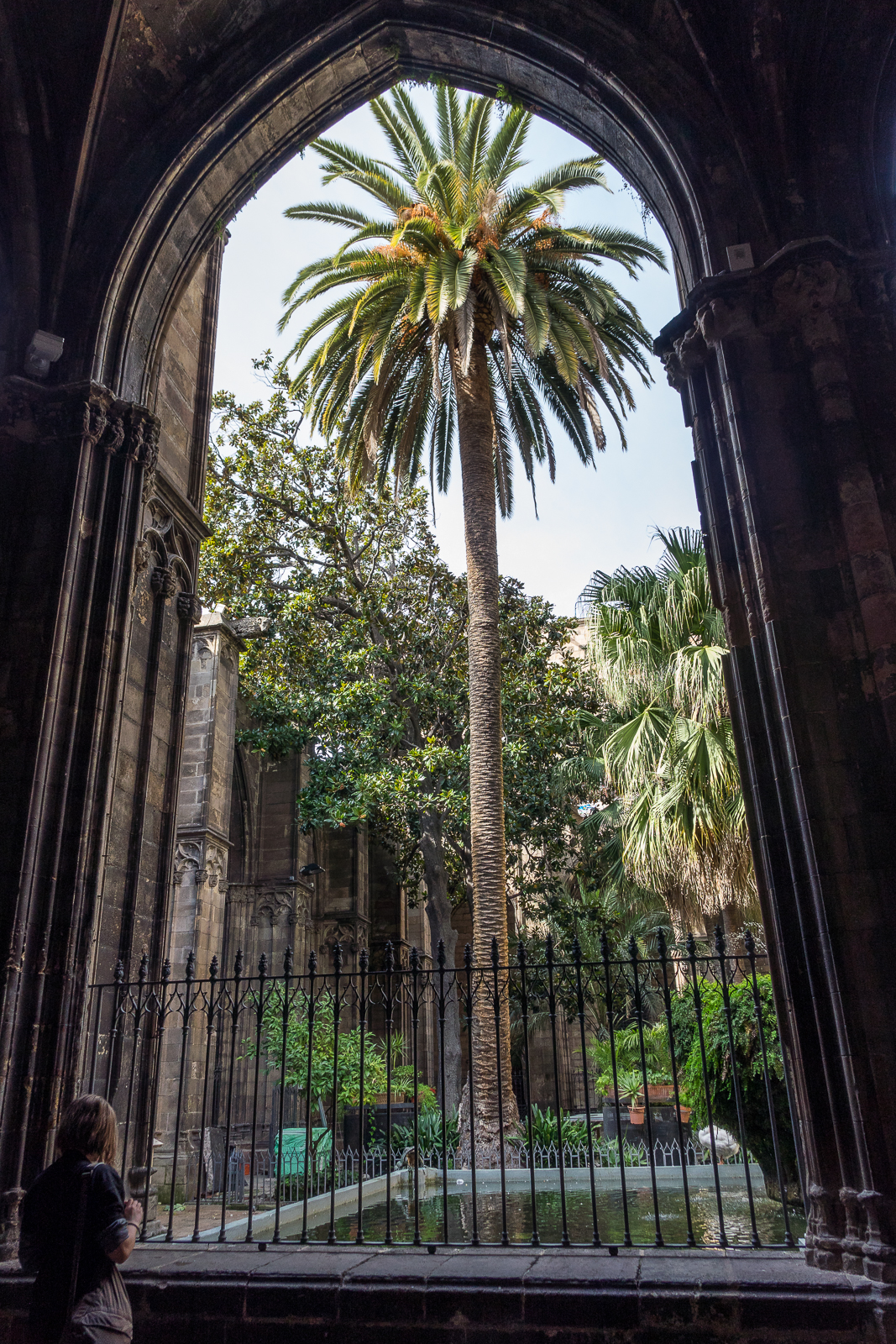
Front view of La Sagrada Familia. This is the still-unfinished basilica and brain child of Antonio Gaudi as his master work. Guadi was very devout, even living in the church for the last few years of his life until he was hit by a trolley in the 1920’s. Construction began before 1900, I think, but charitable donations are the only source of funding at this time. Gaudi originally designed 12 spires, one for each apostle, for this church–these are not all built yet. Although he designed many homes and apartment building for wealthy patrons prior to working on this church, the basilica was his sole focus later in life.
”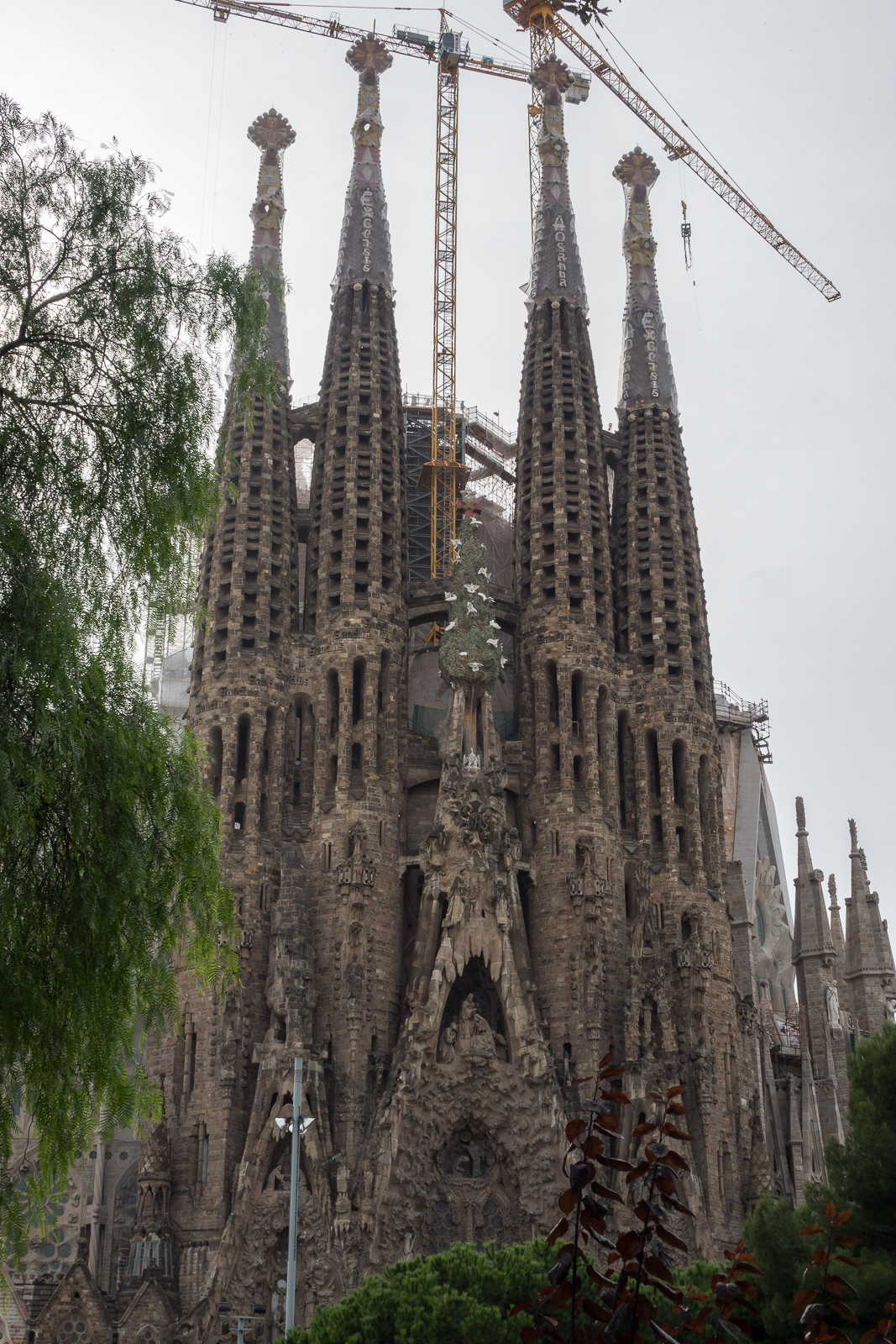
The facade to the basilica entrance is devoted to the Nativity and the early years of Christ.
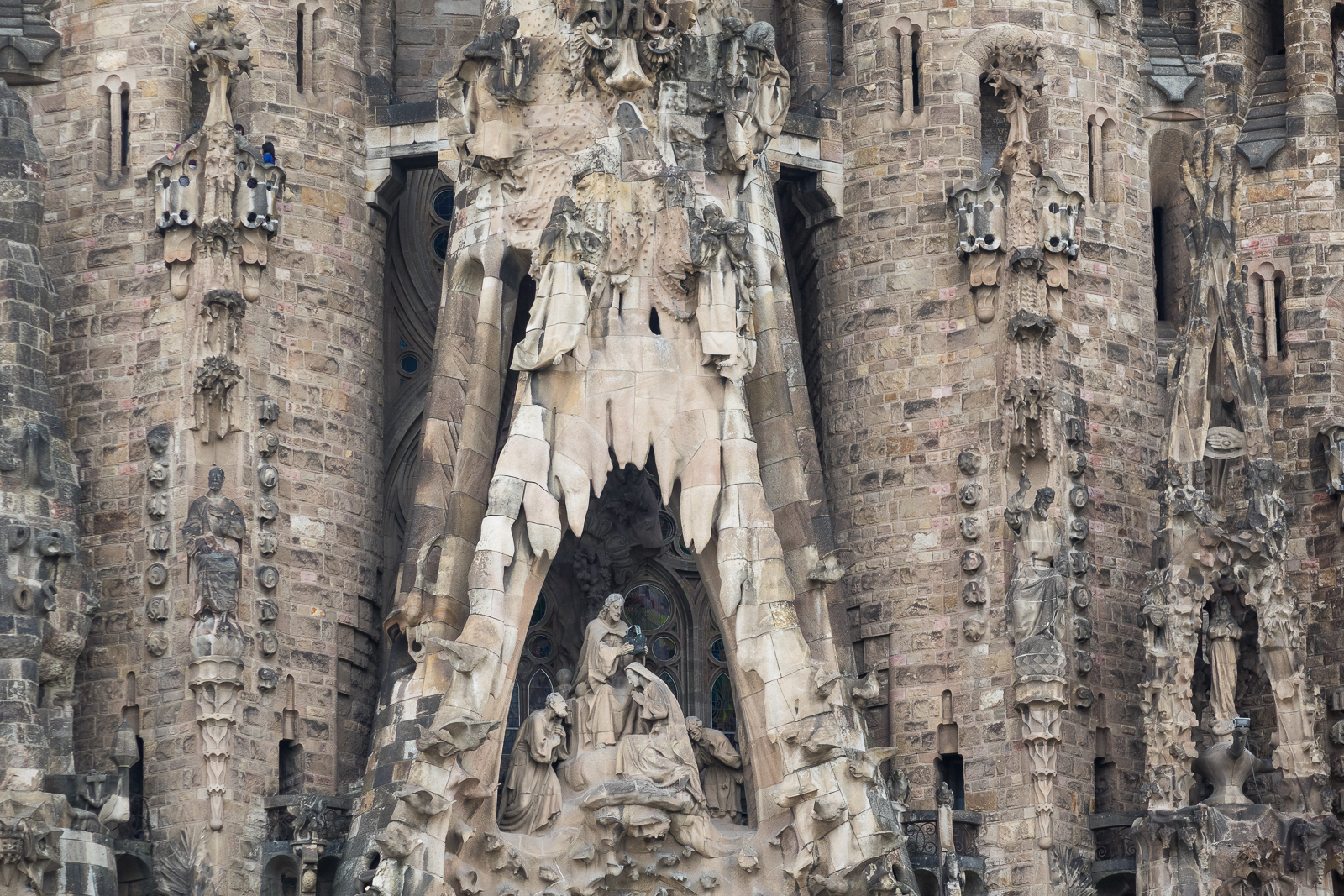
”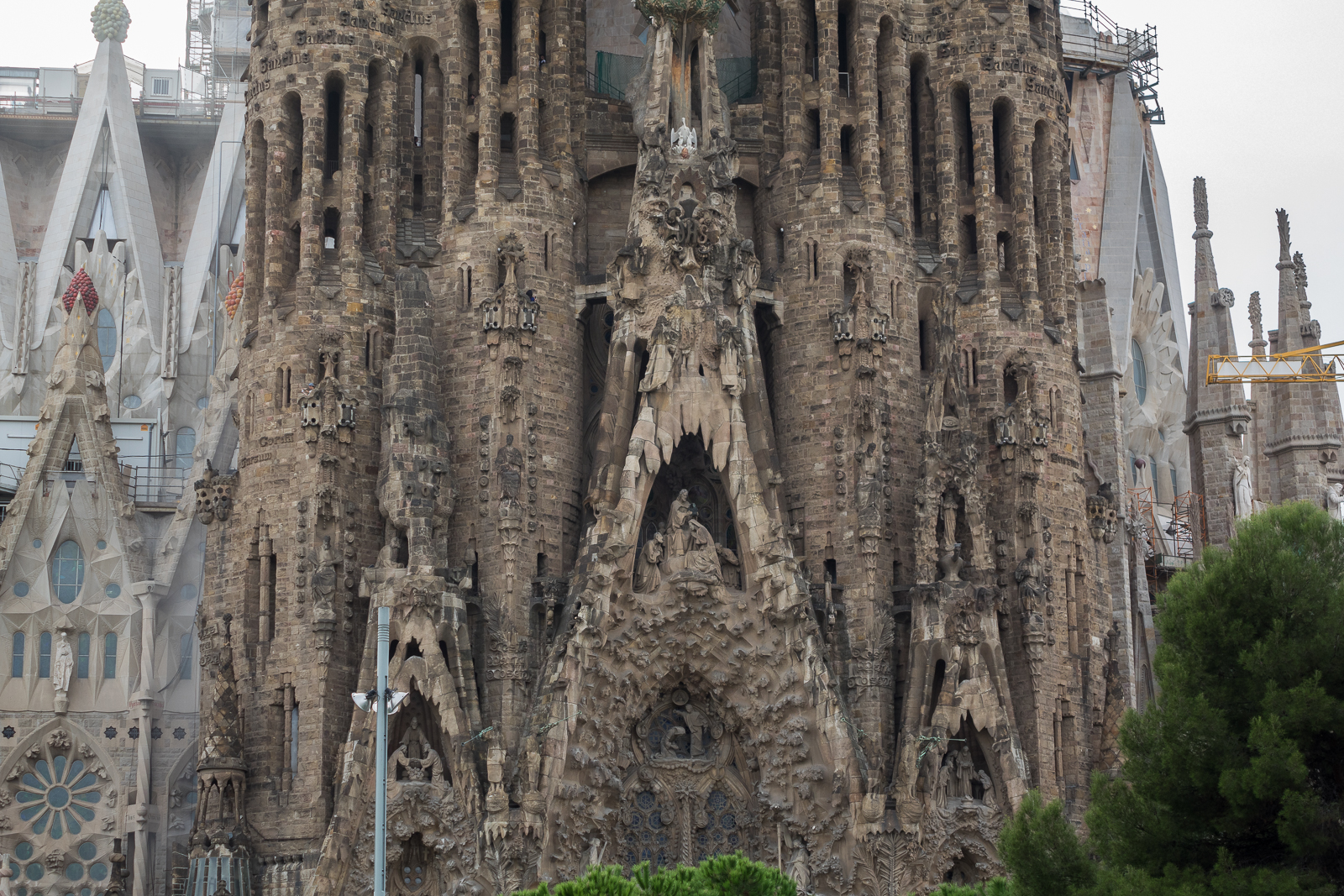
Again, organic motifs are everywhere in the sculpture work. Architects who took over construction after Gaudi’s death have tried to keep the design faithful to the organic themes Gaudi favored.

These kids (band members?? Never found out!) were too colorful to pass up as we waited to enter the basilica.
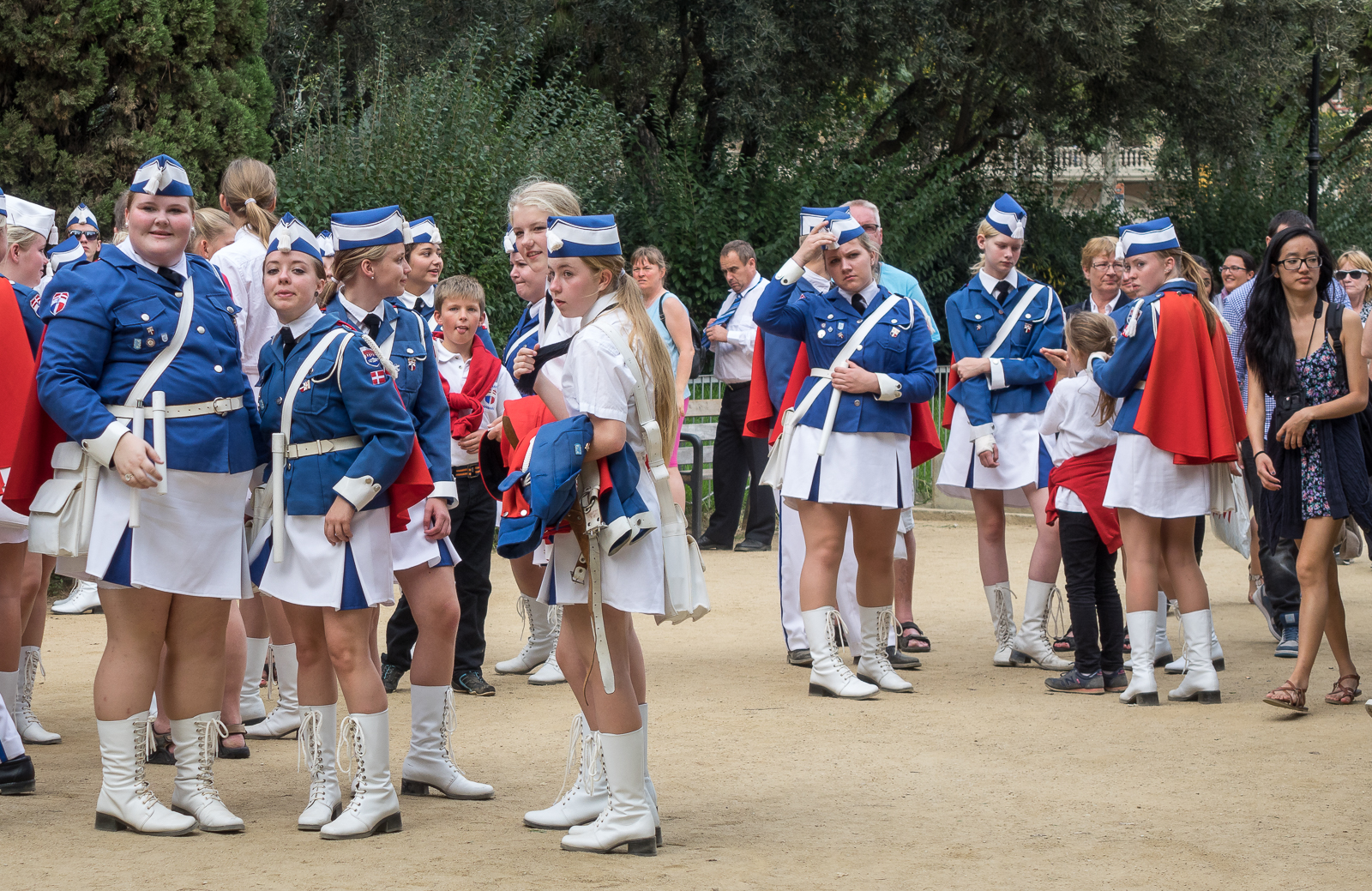
Sculptures at the entrance were incredibly detailed.
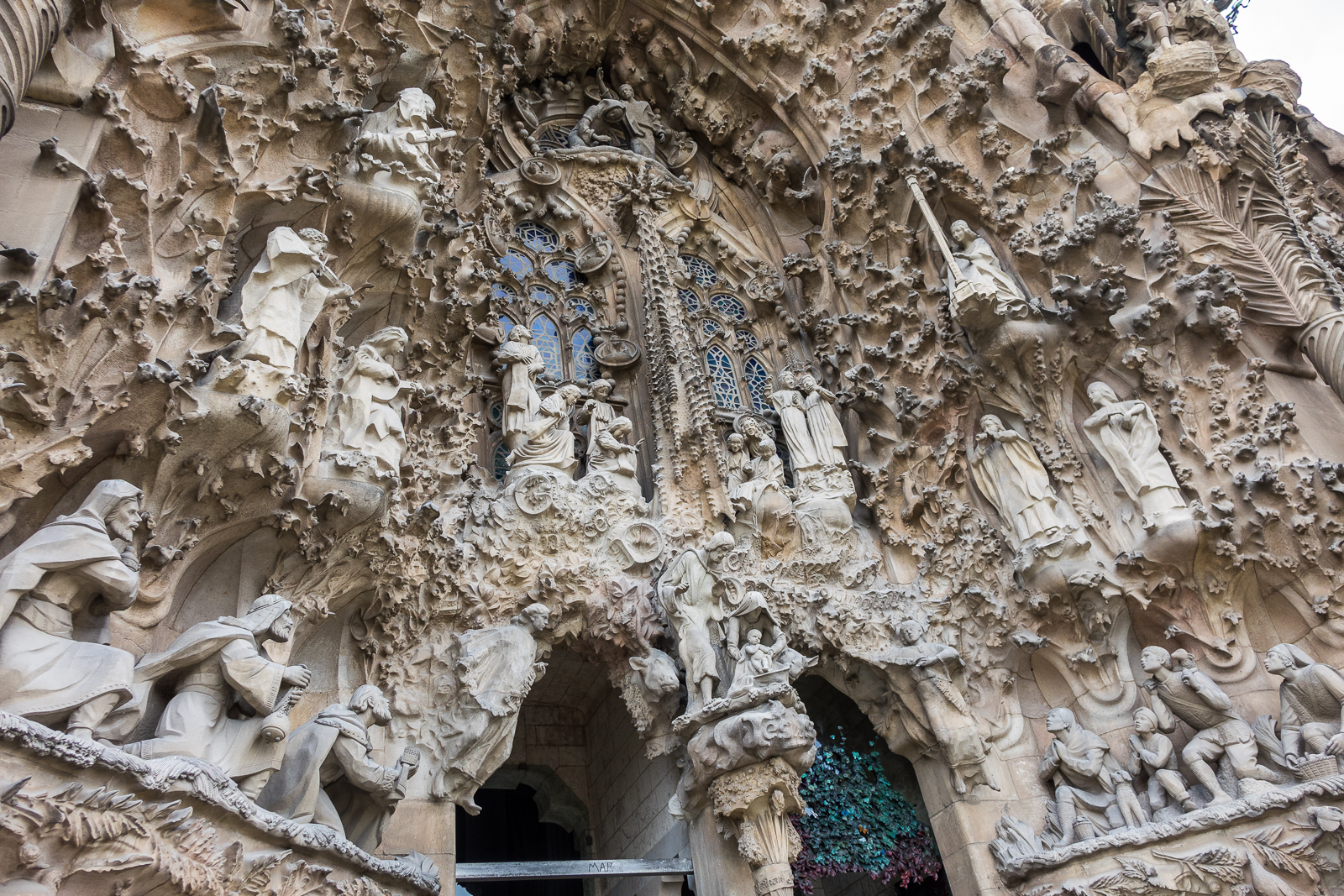
Again, organic leaf designs behind the Nativity scenes. As a young student, I used to think that Gaudi’s style was gaudy and over-done, but I didn’t really understand his artistic motivation until I prepared for the trip to Barcelona. He was a tremendously creative and expressive architect and way, way ahead of his time in material use and design.
”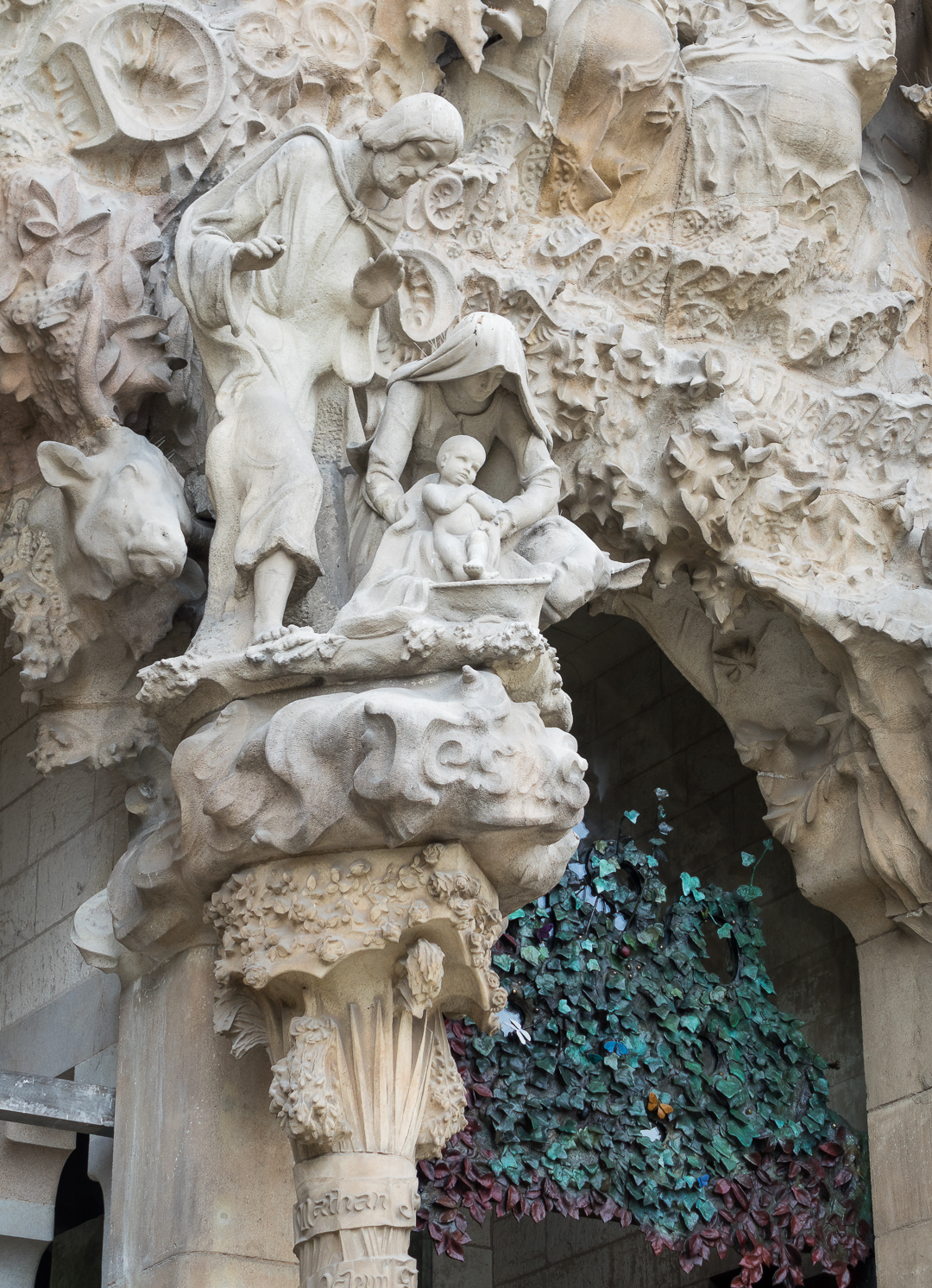
”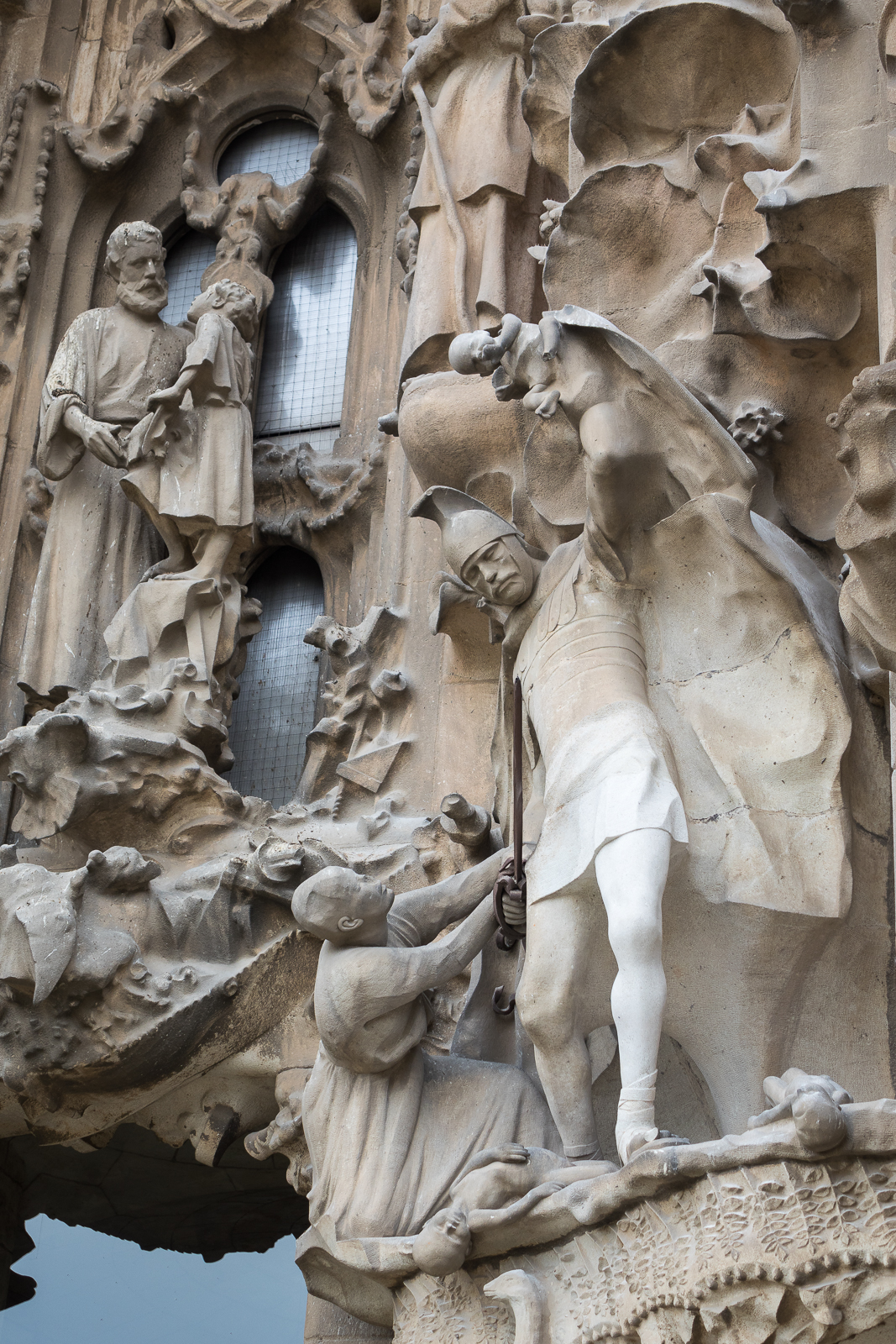
Interior of La Sagrada Familia….true to form, Gaudi wanted the columns to be reminiscent of tree trunks/forests. The interior space really soars and creates a light, airy space of worship.
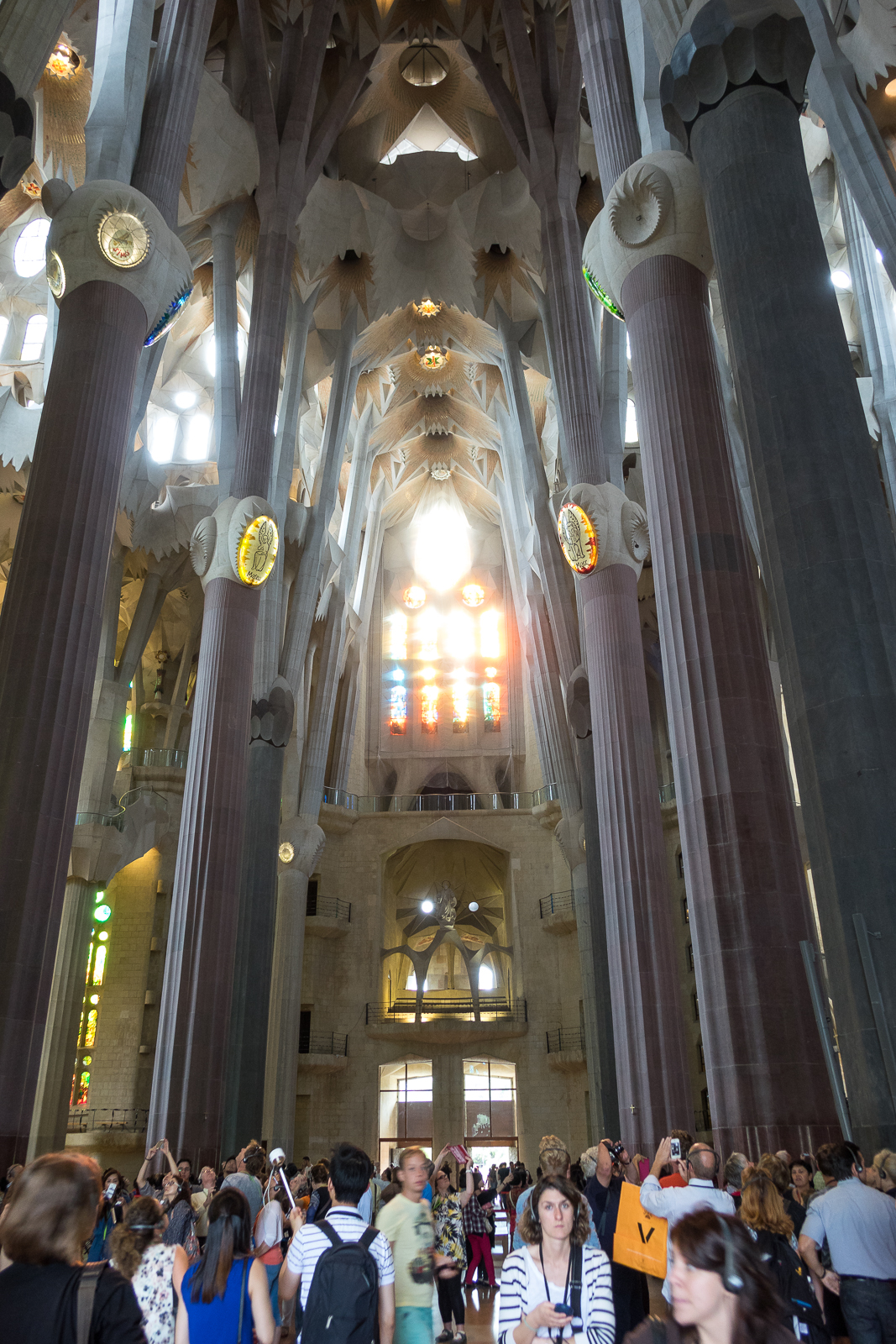
The interior also creates an atmosphere of constantly shifting light and color with its stained glass windows. Much more dramatic and at the same time softer than any interior space I have seen in any other church. For years I had seen pictures of this as a Spanish student myself, but photos don’t really do justice to the beauty of this place. You have to see Gaudi’s work to truly appreciate it fully.
”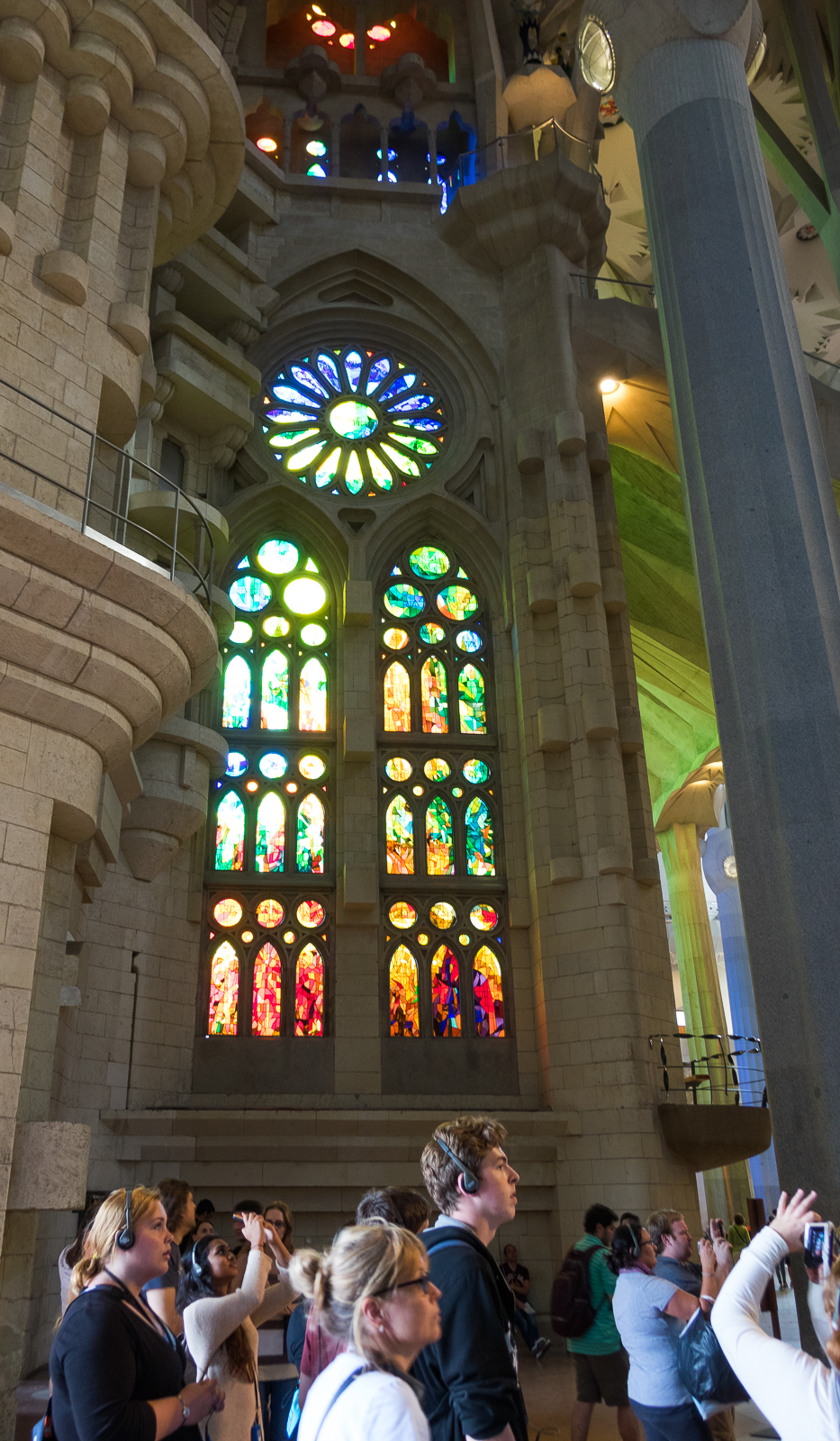
Looking up from the floor of the basilica…
”
Karla takes photos to capture the beauty of the light.
”
”
Plaques feature the four Evangelists near the main altar.
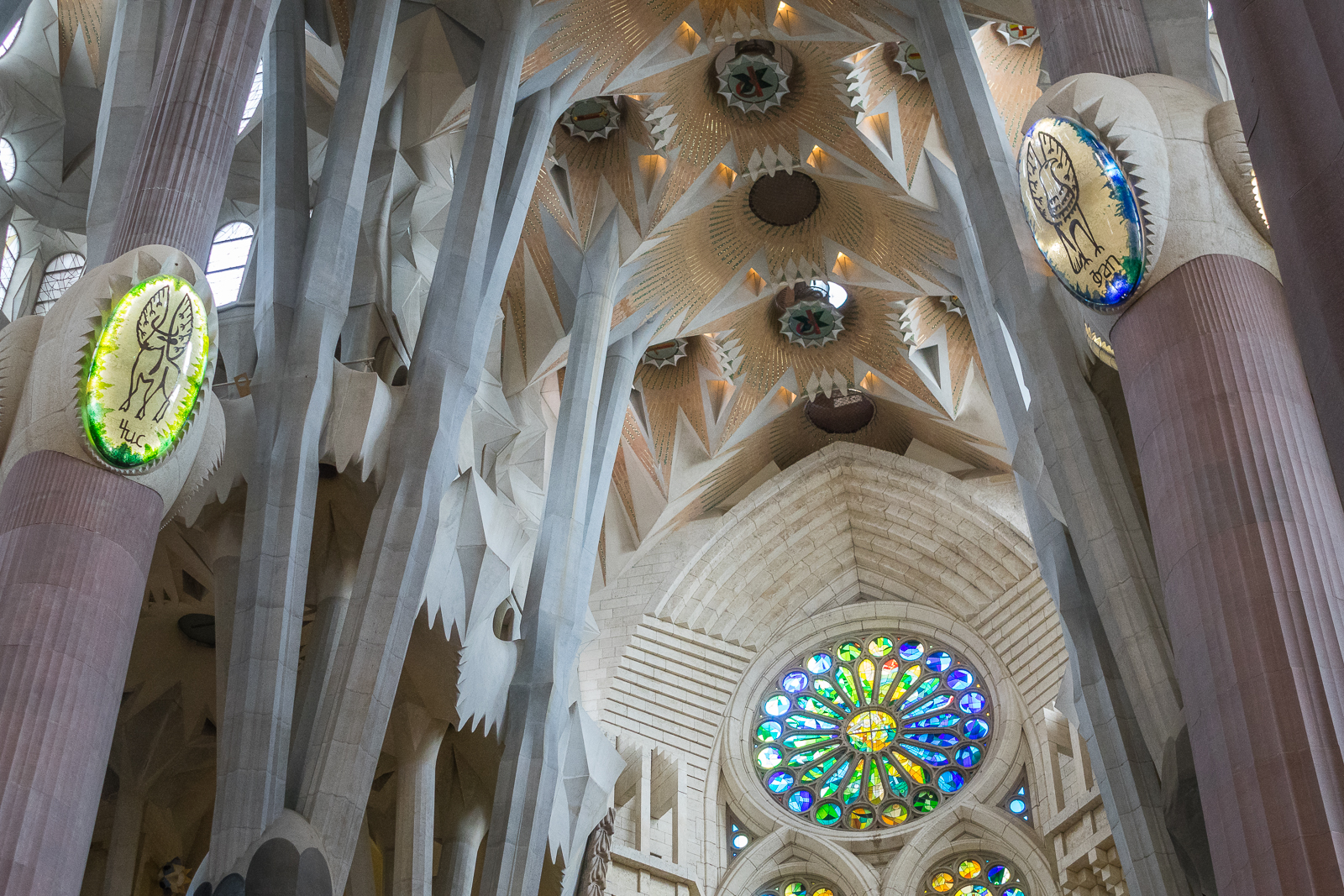
Windows create a light show inside.
”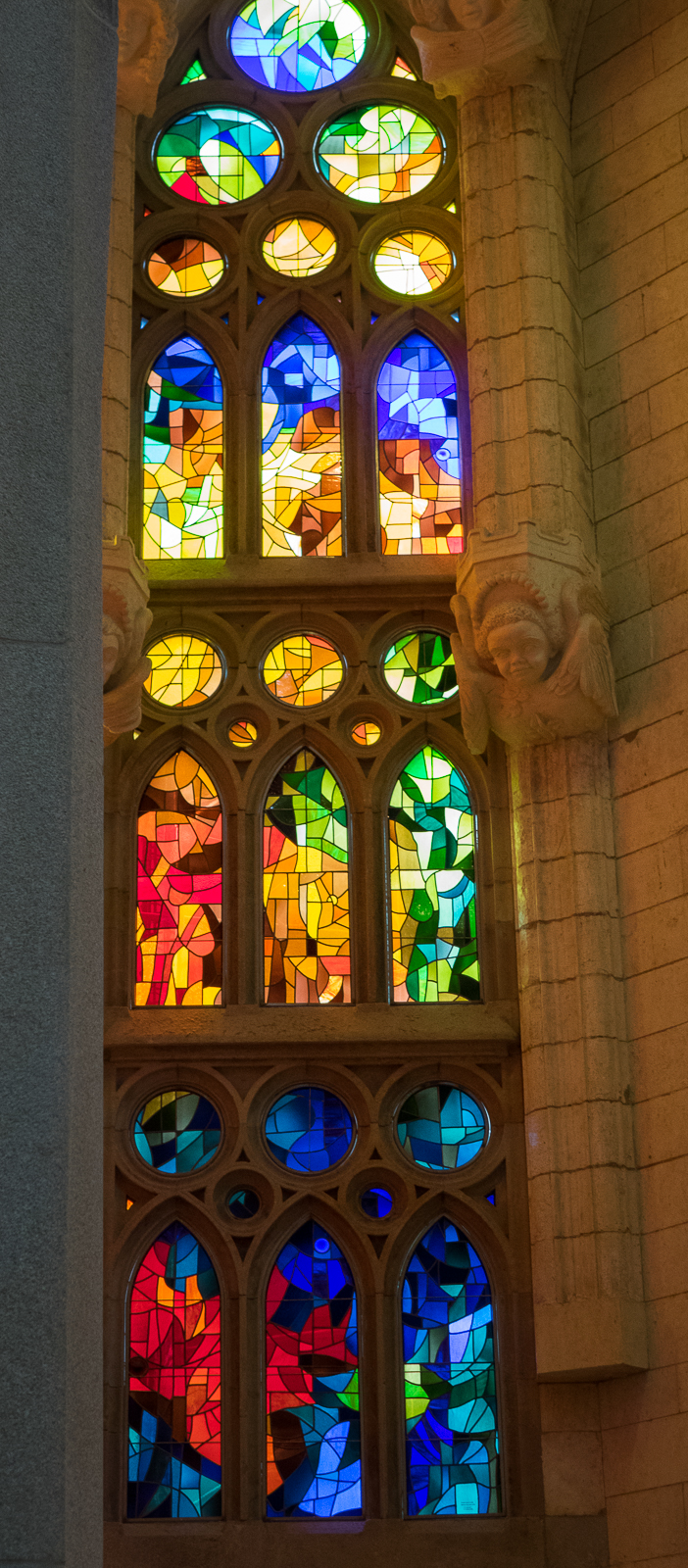
”
”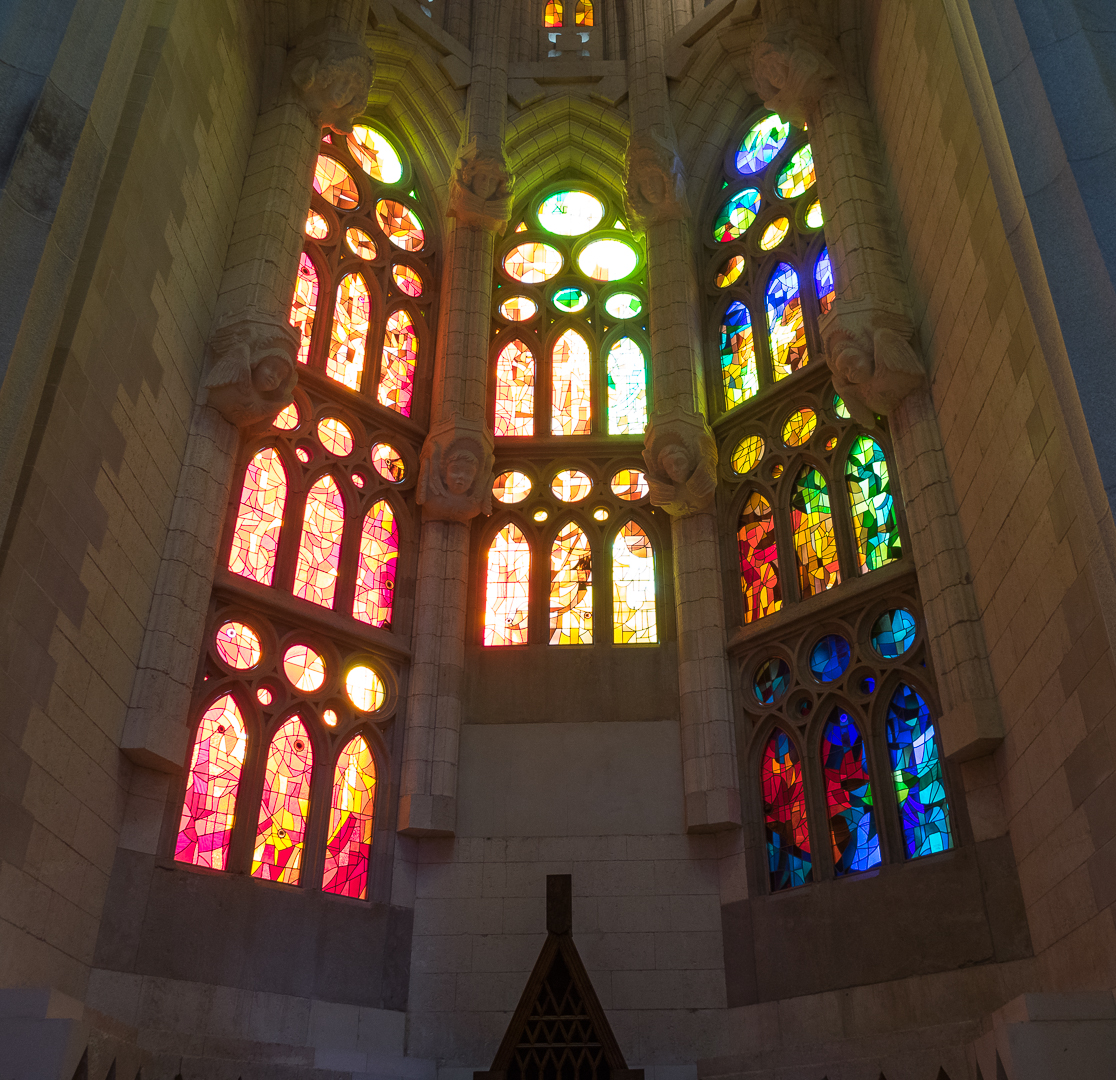
”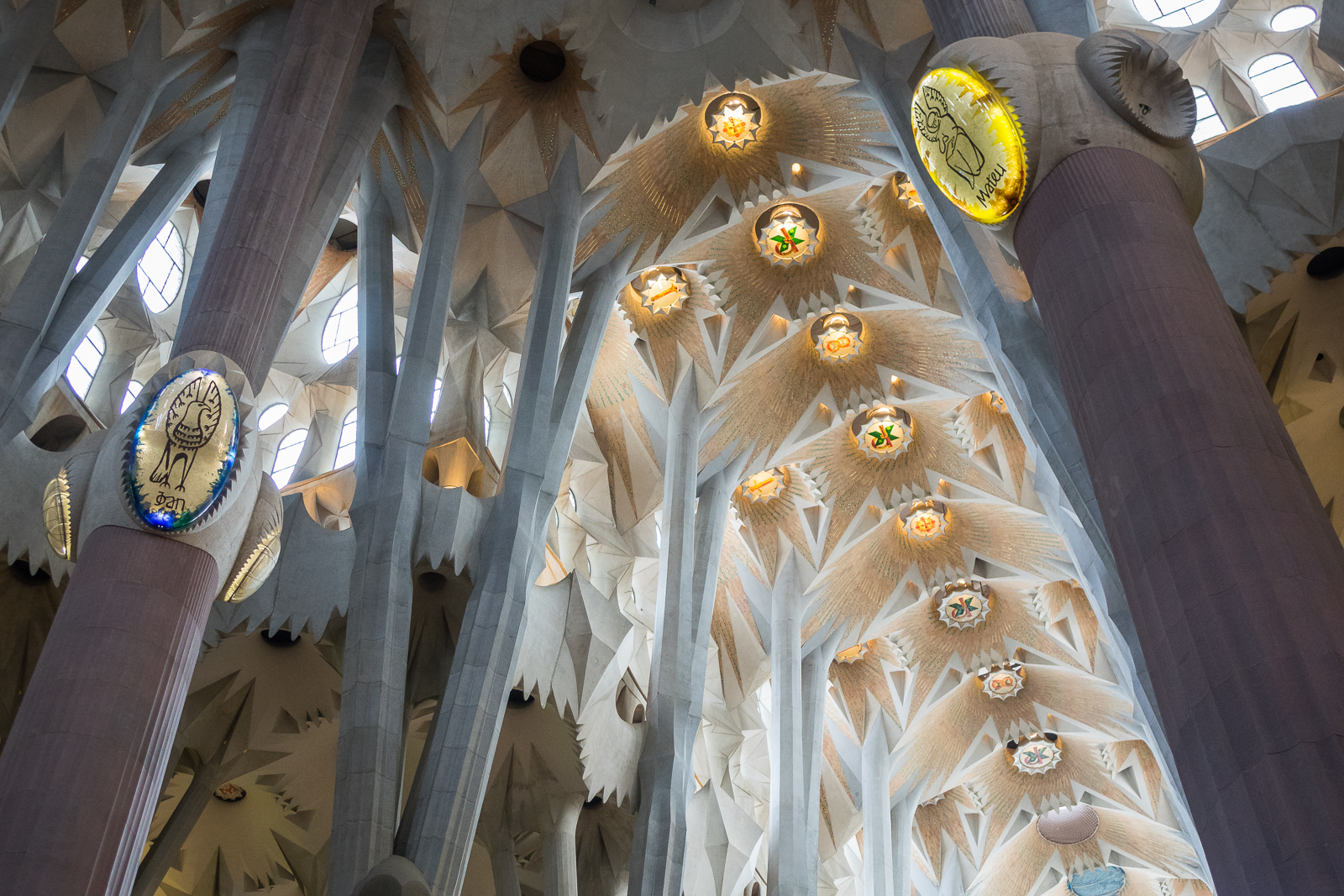
Exterior doors where we exited the tour have a Crucifixion theme.
”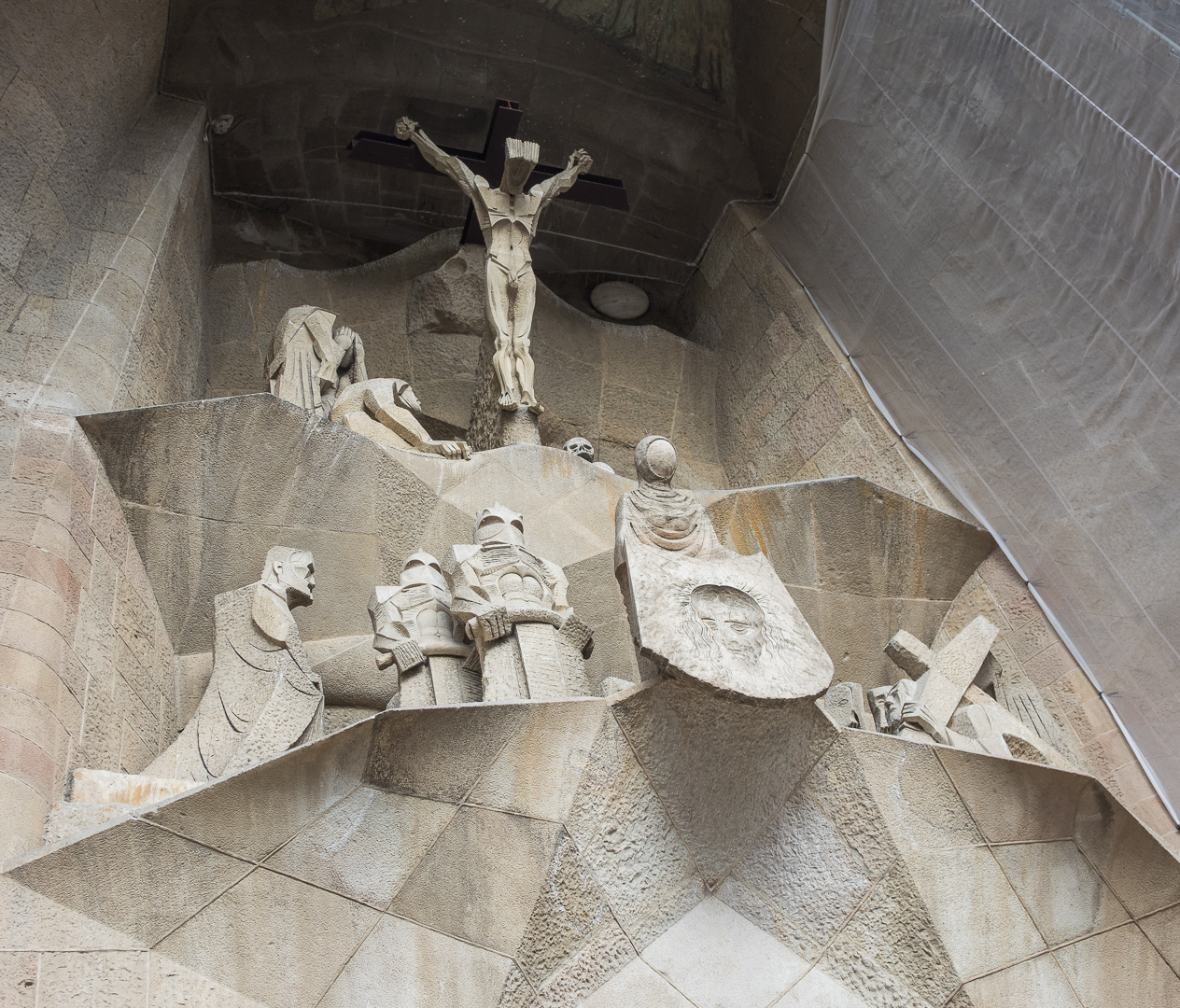
Casa Batllo is a famous apartment building / museum designed by Gaudi in busy downtown Barcelona. La Pedrera, a larger example of a commercial building he designed, was under renovation at the time of our visit, so I was unable to get photographs. Karla and I scrambled around a backhoe doing street construction to get a shot of this.
”